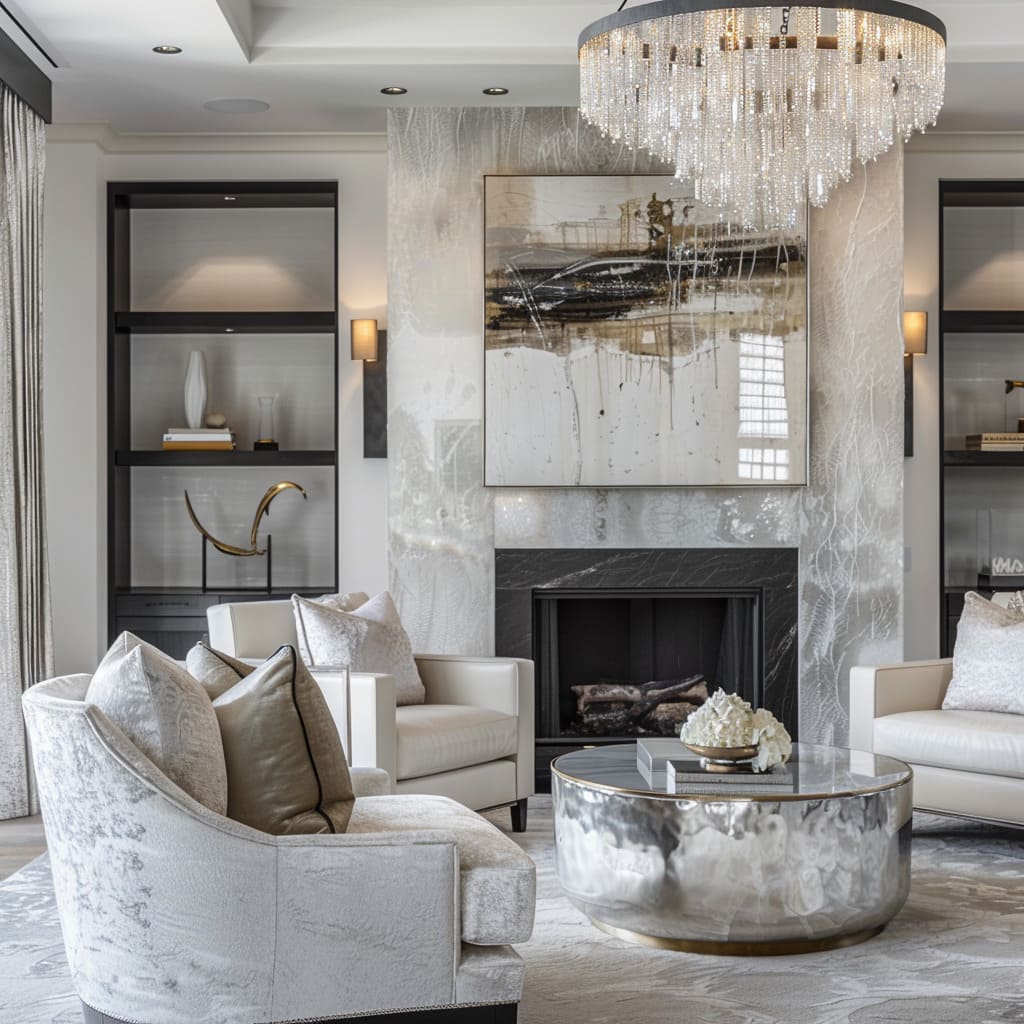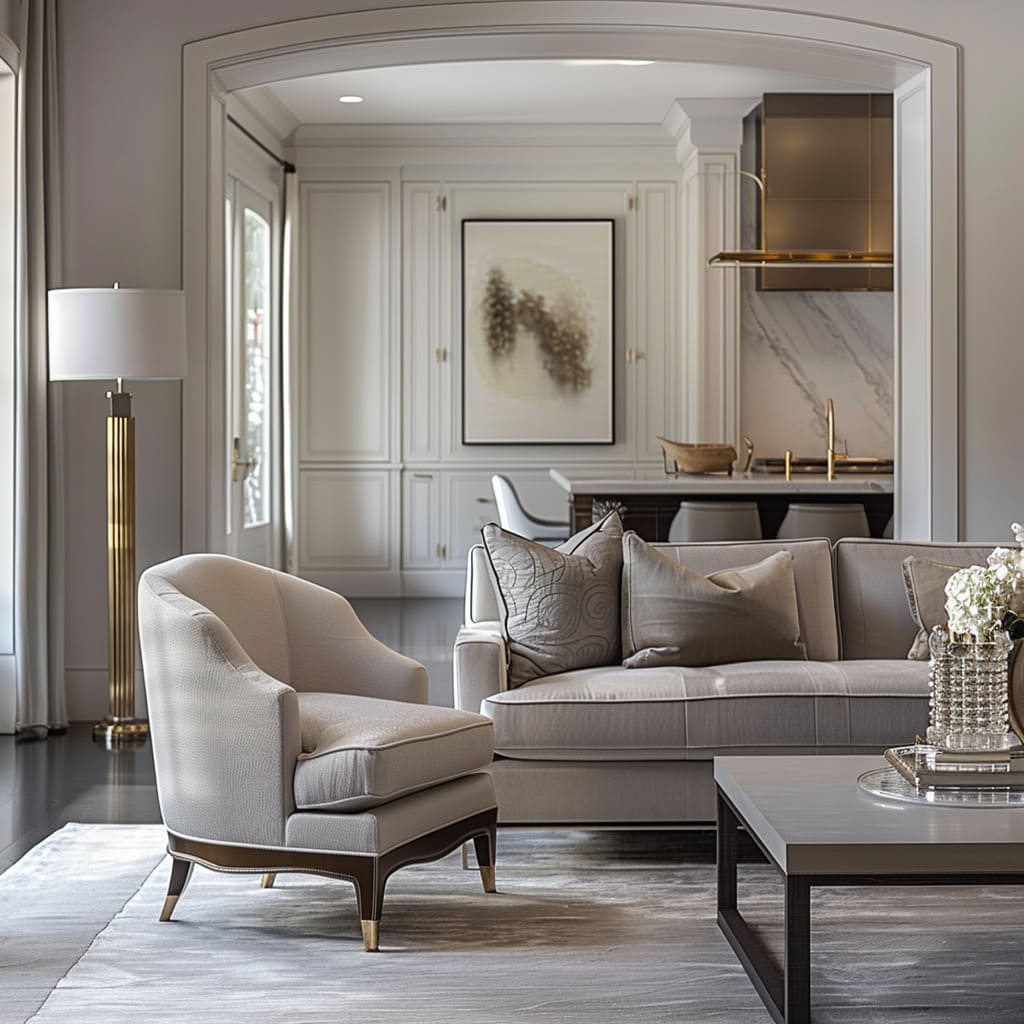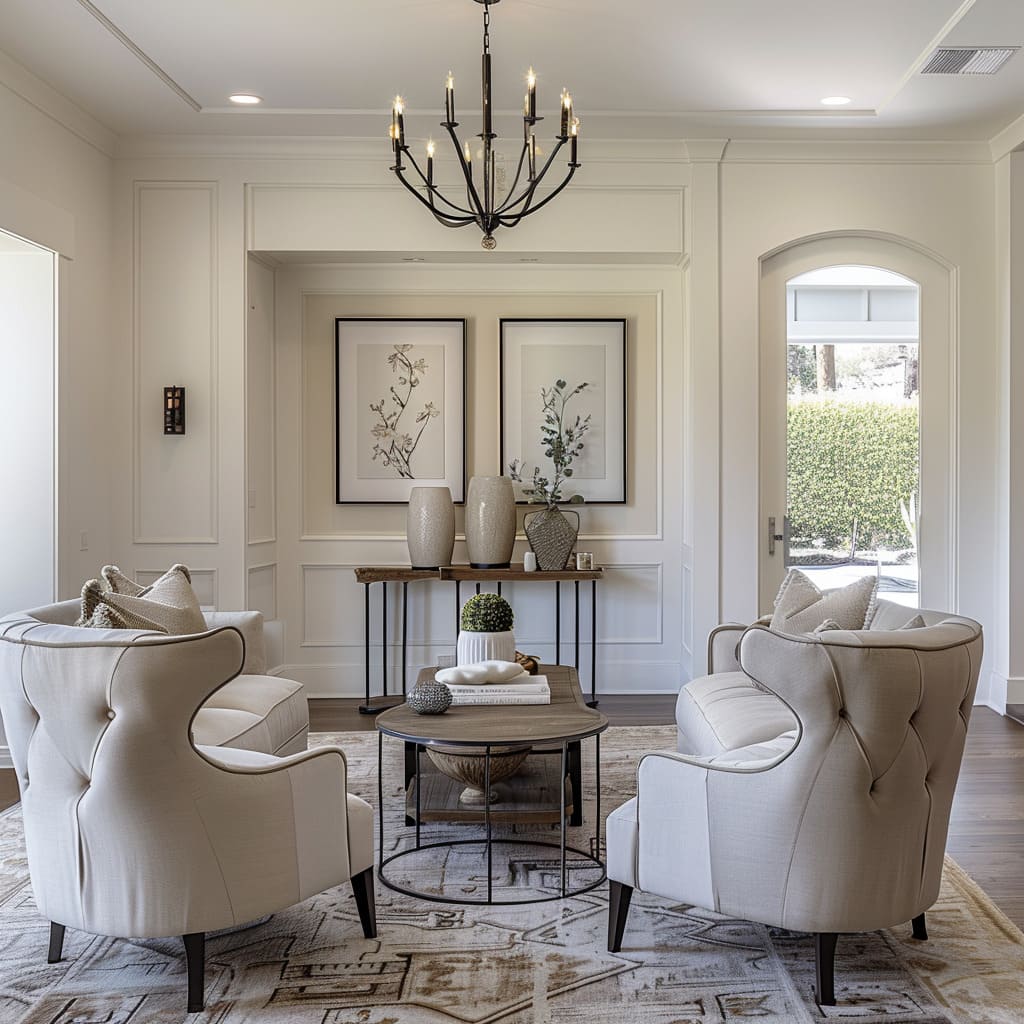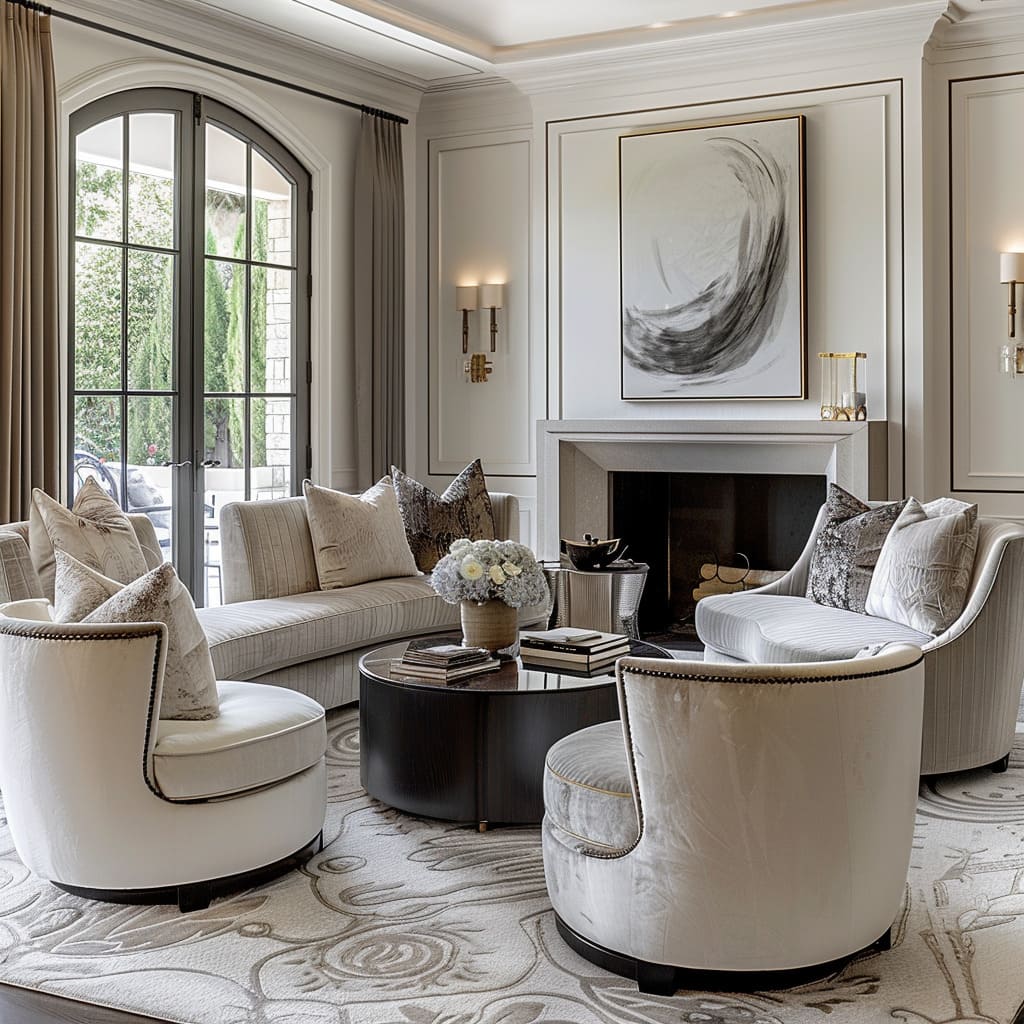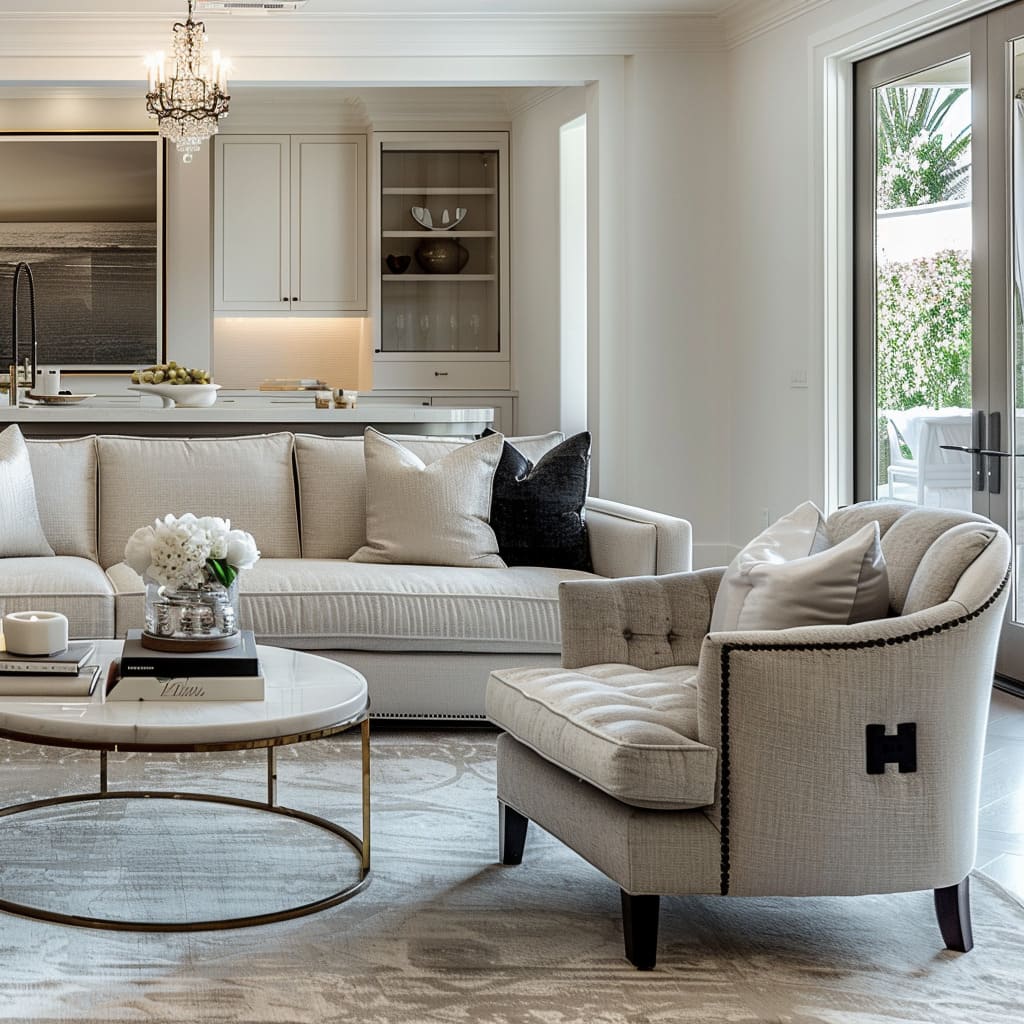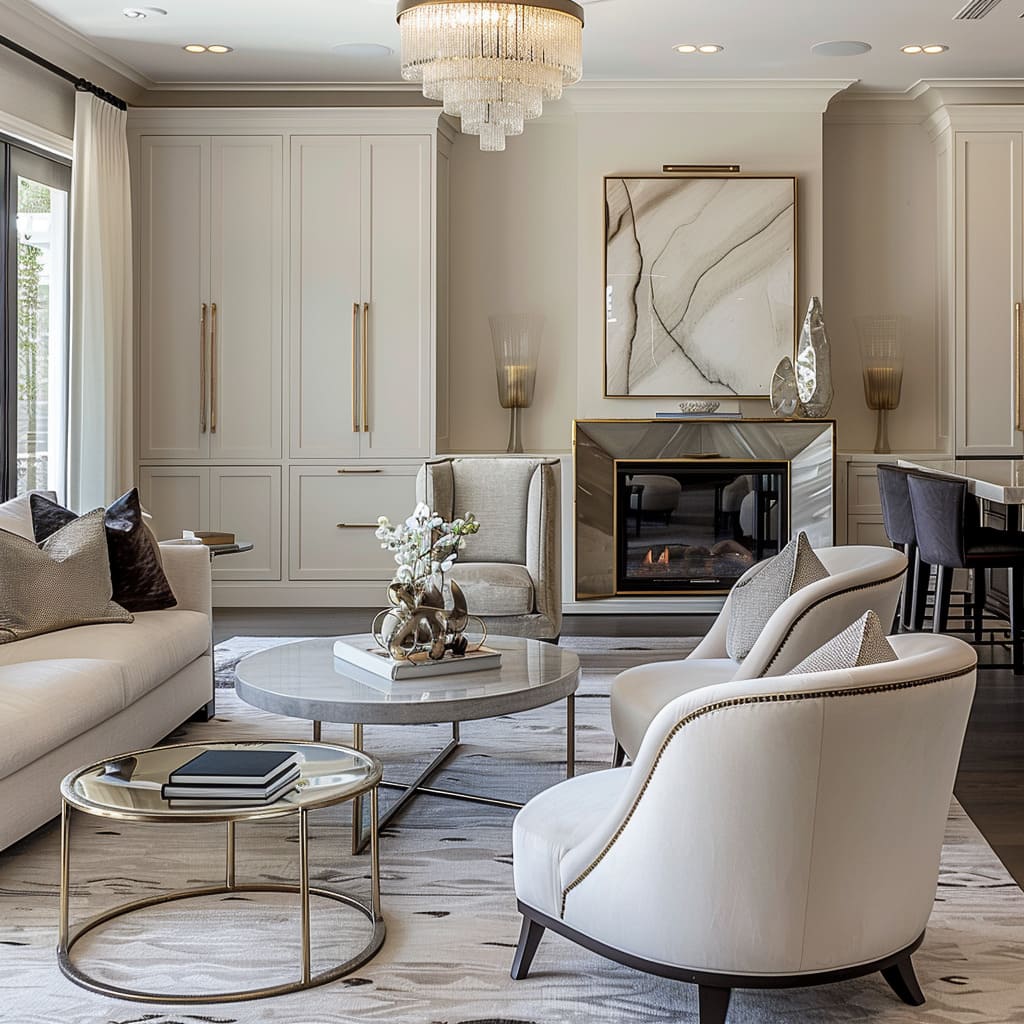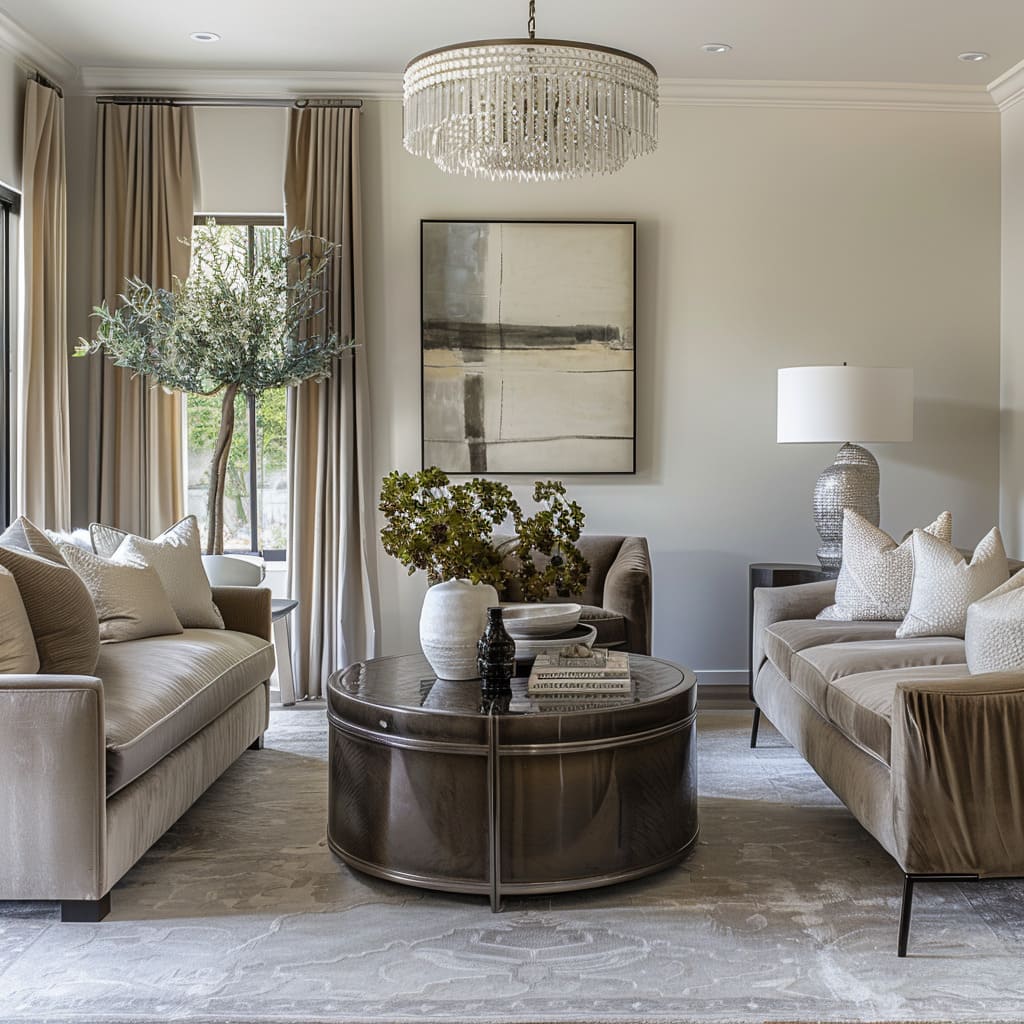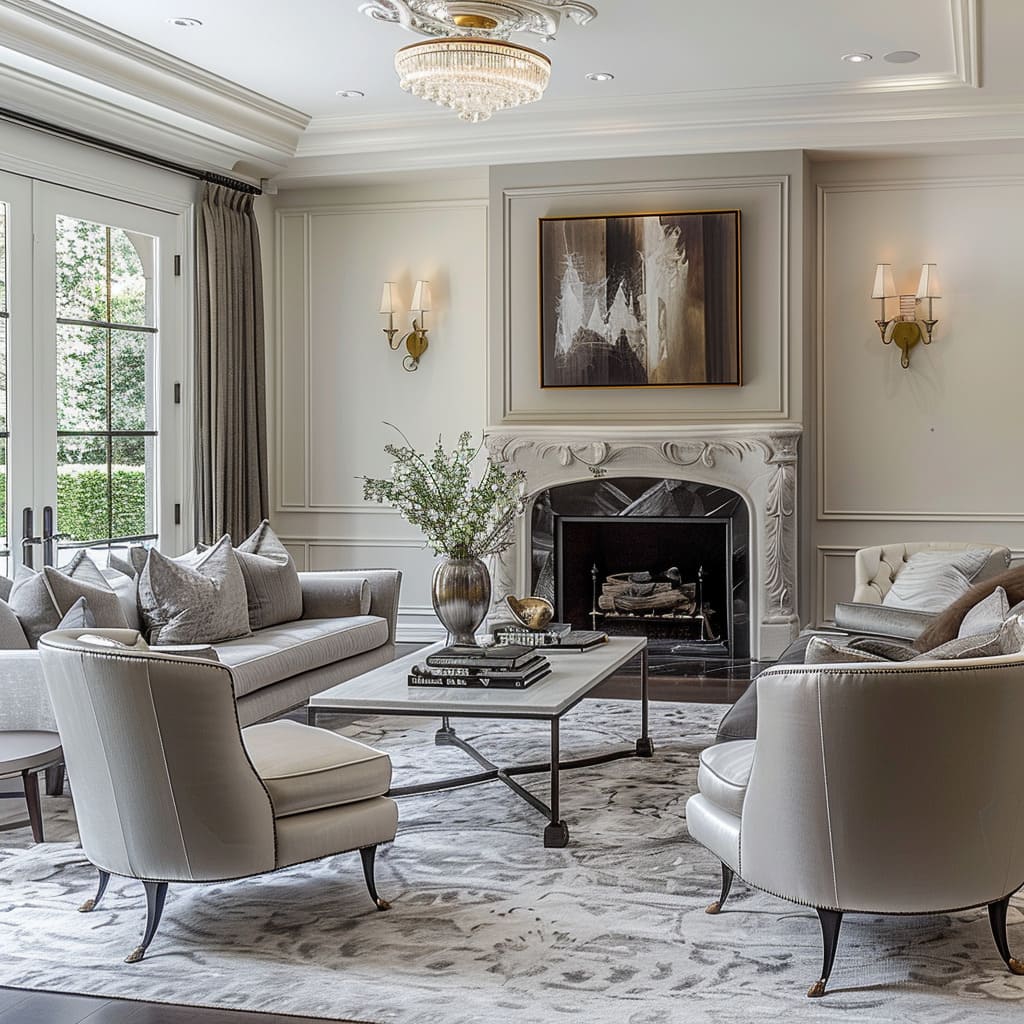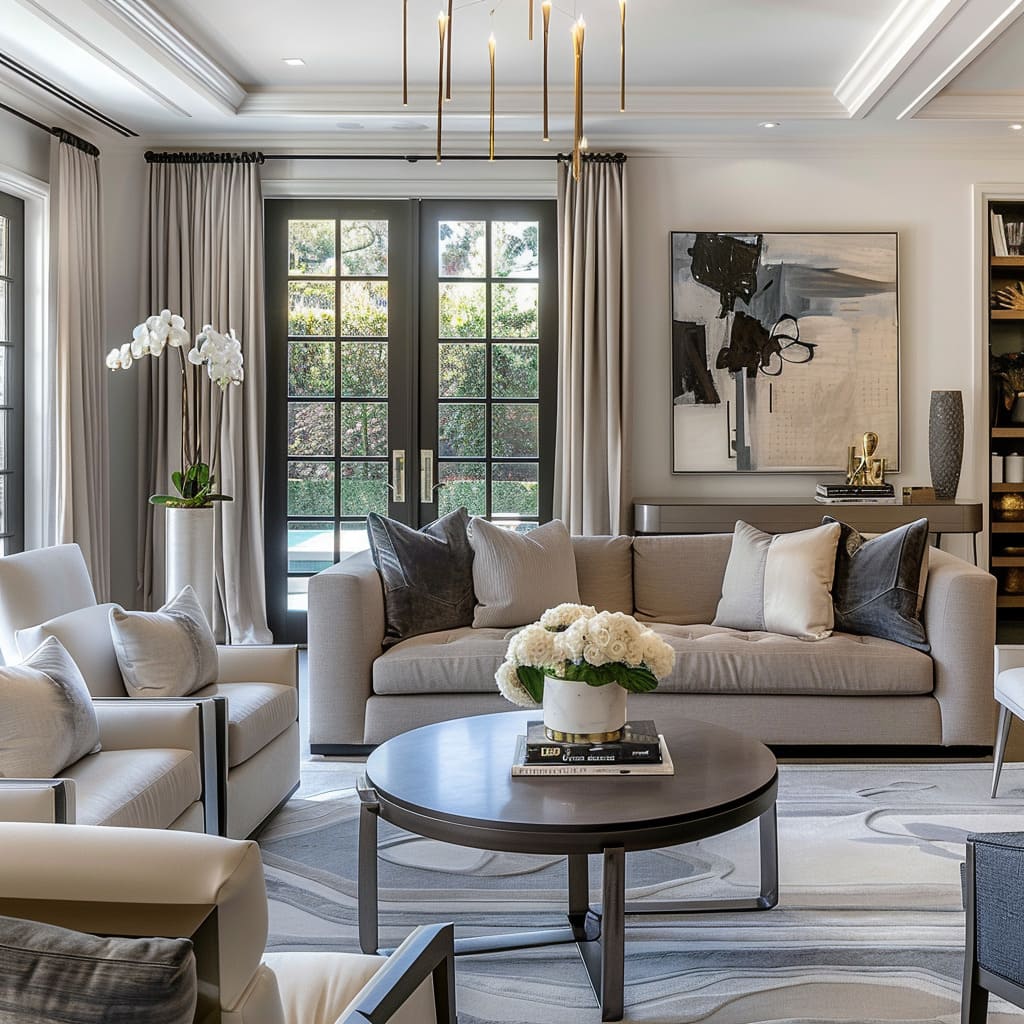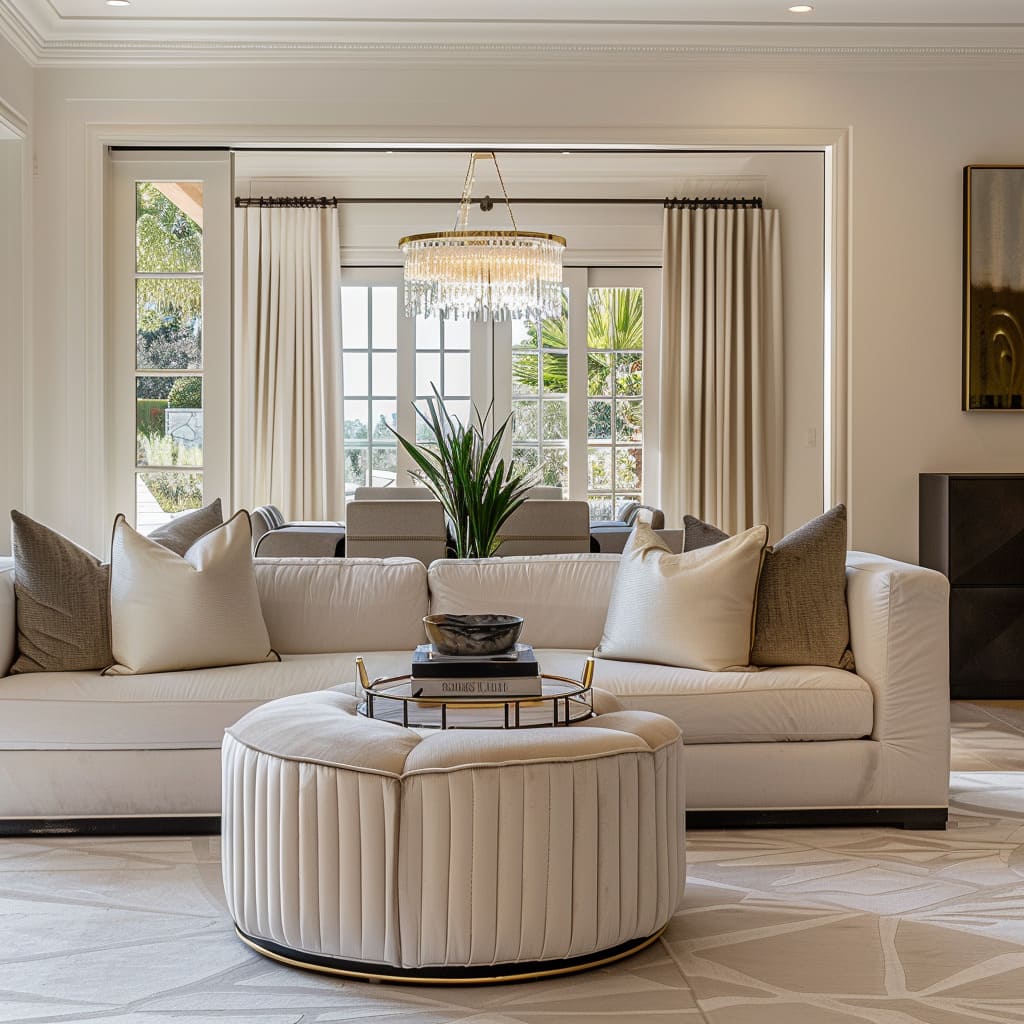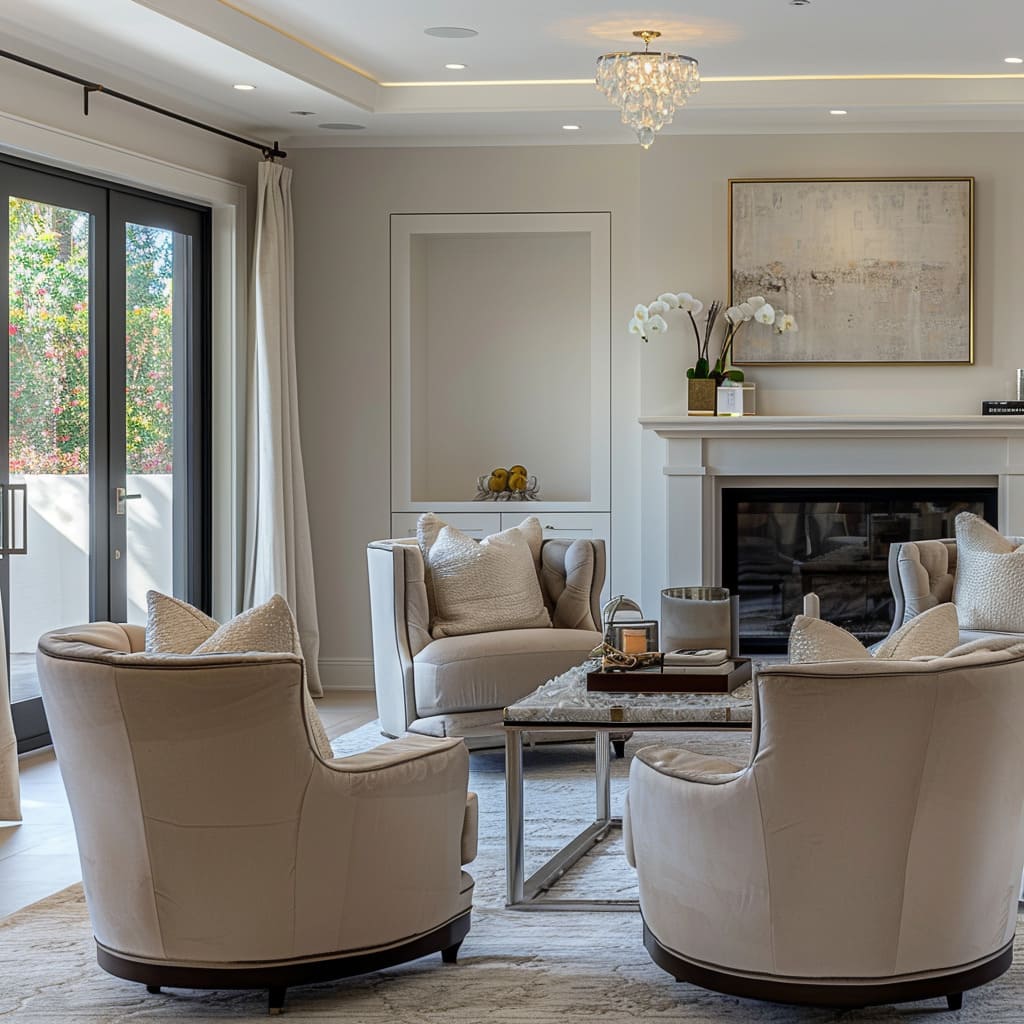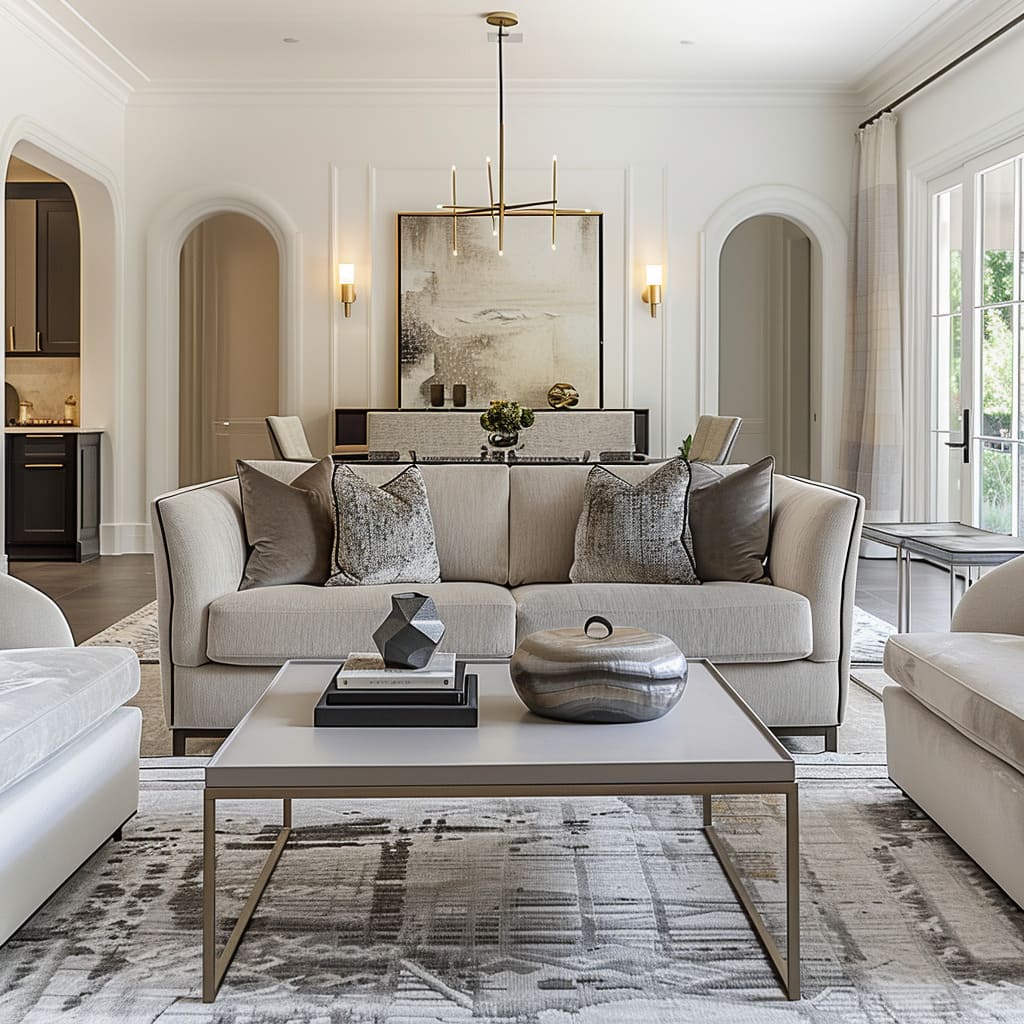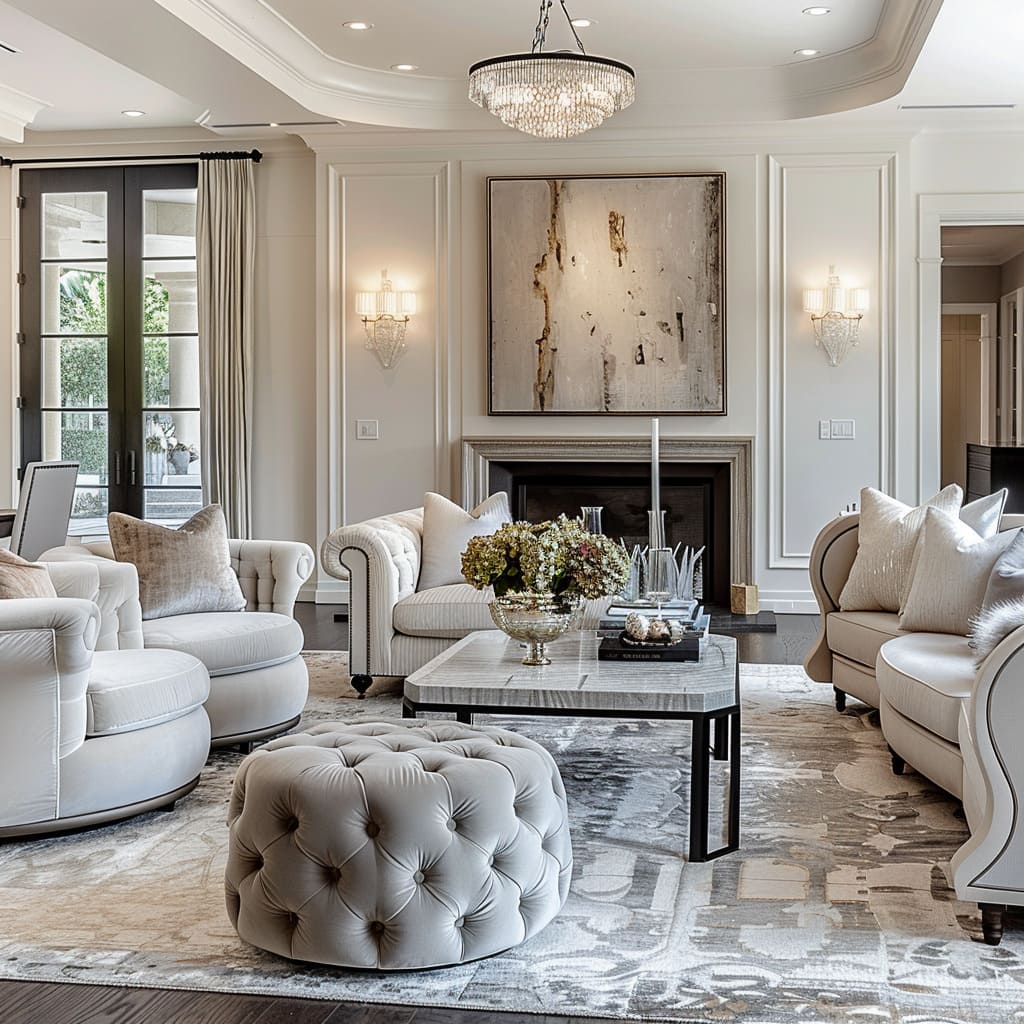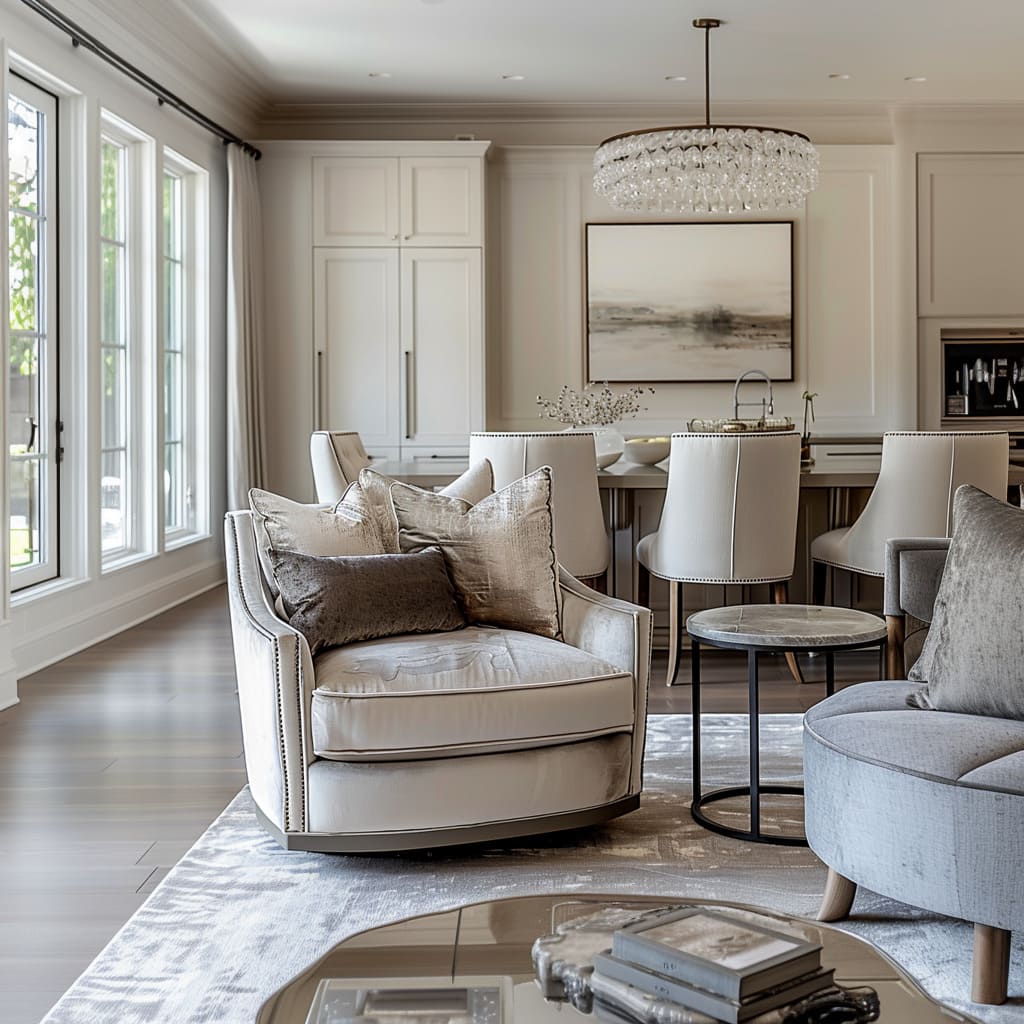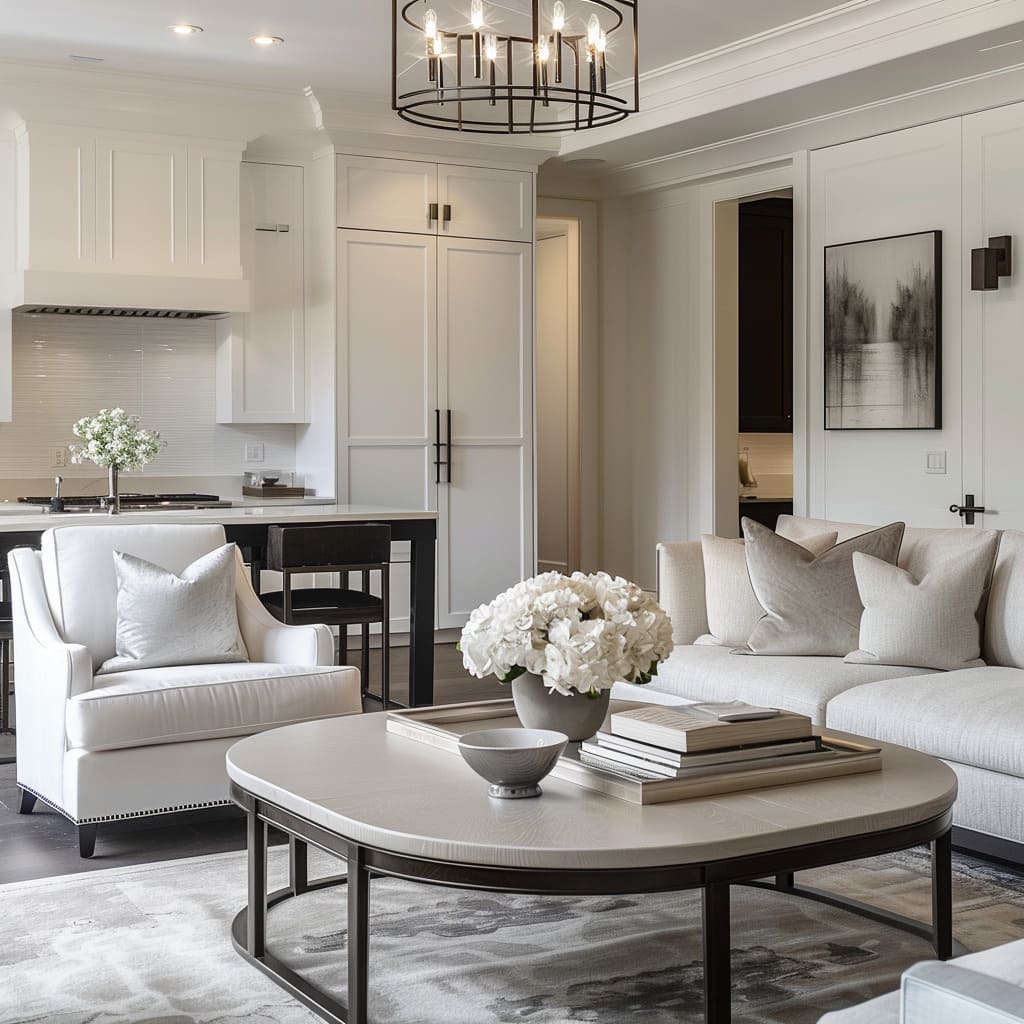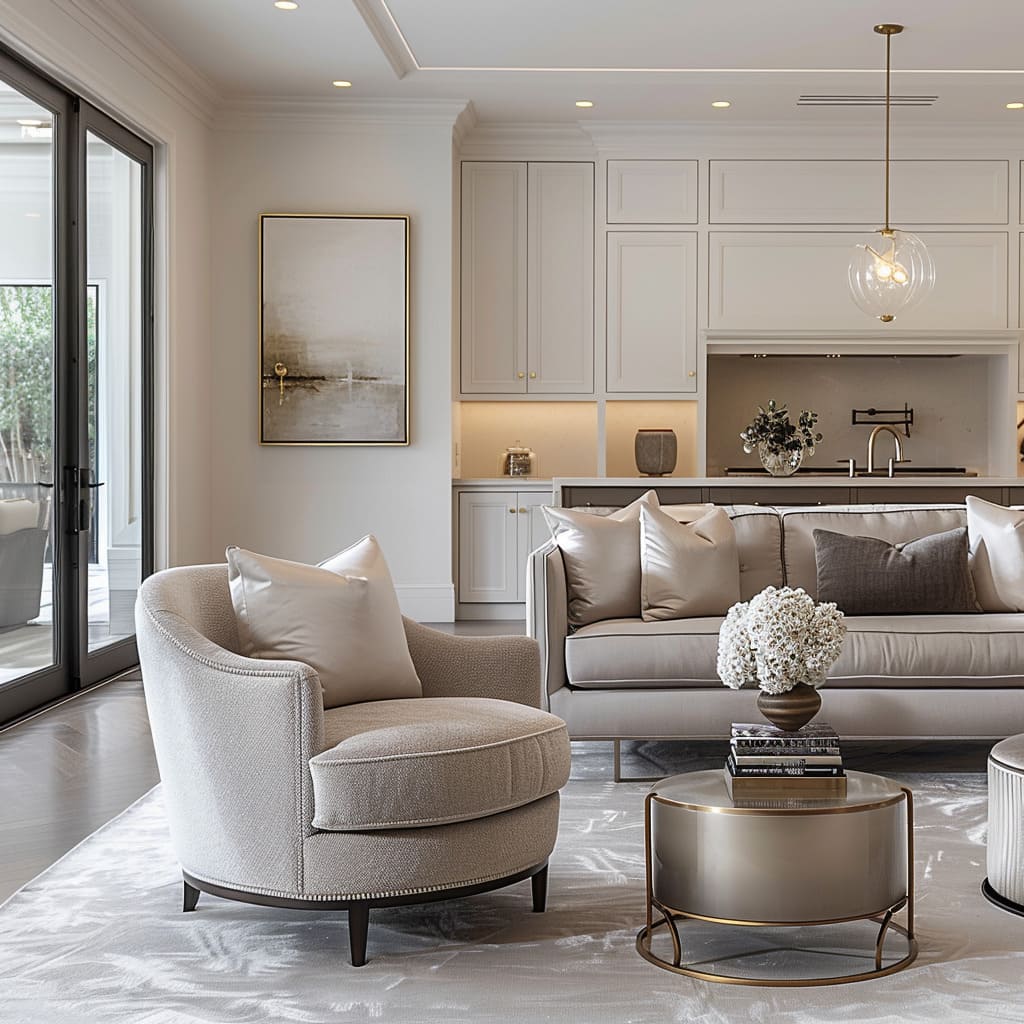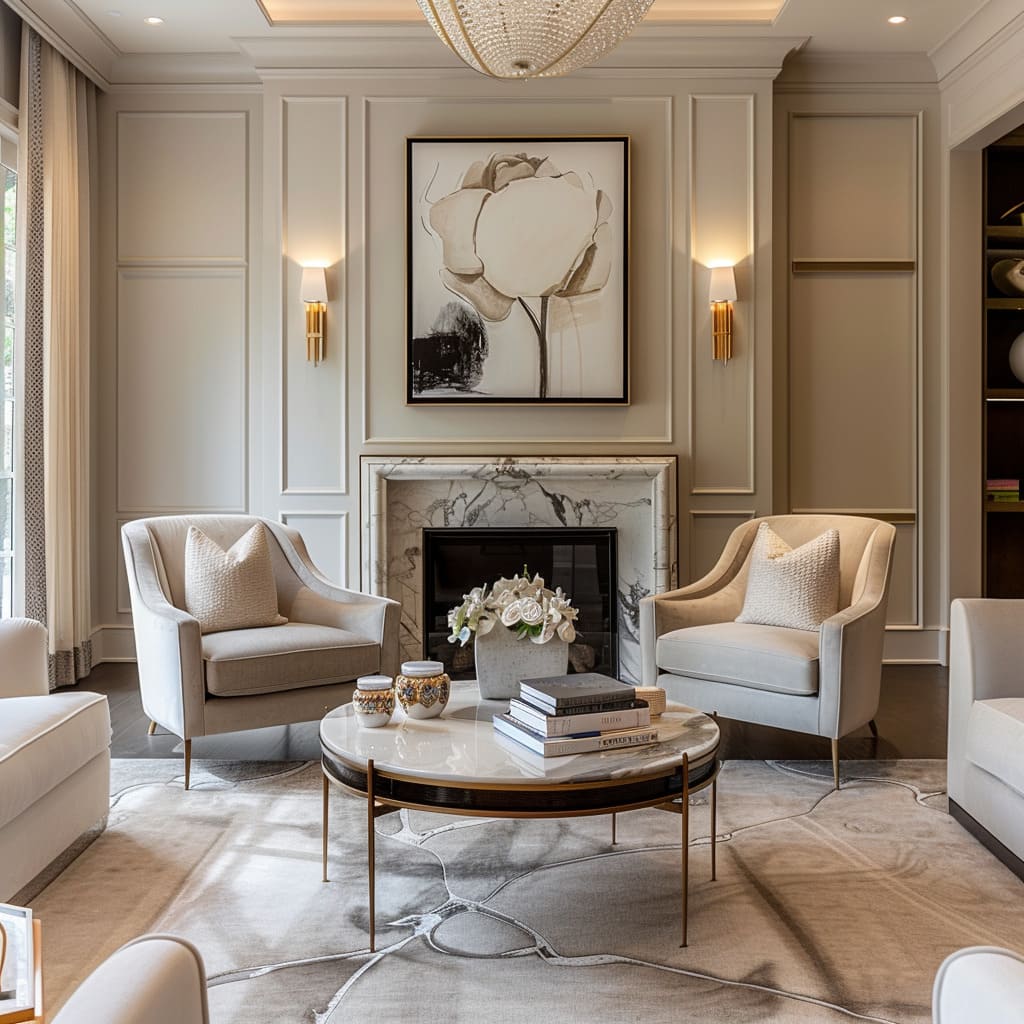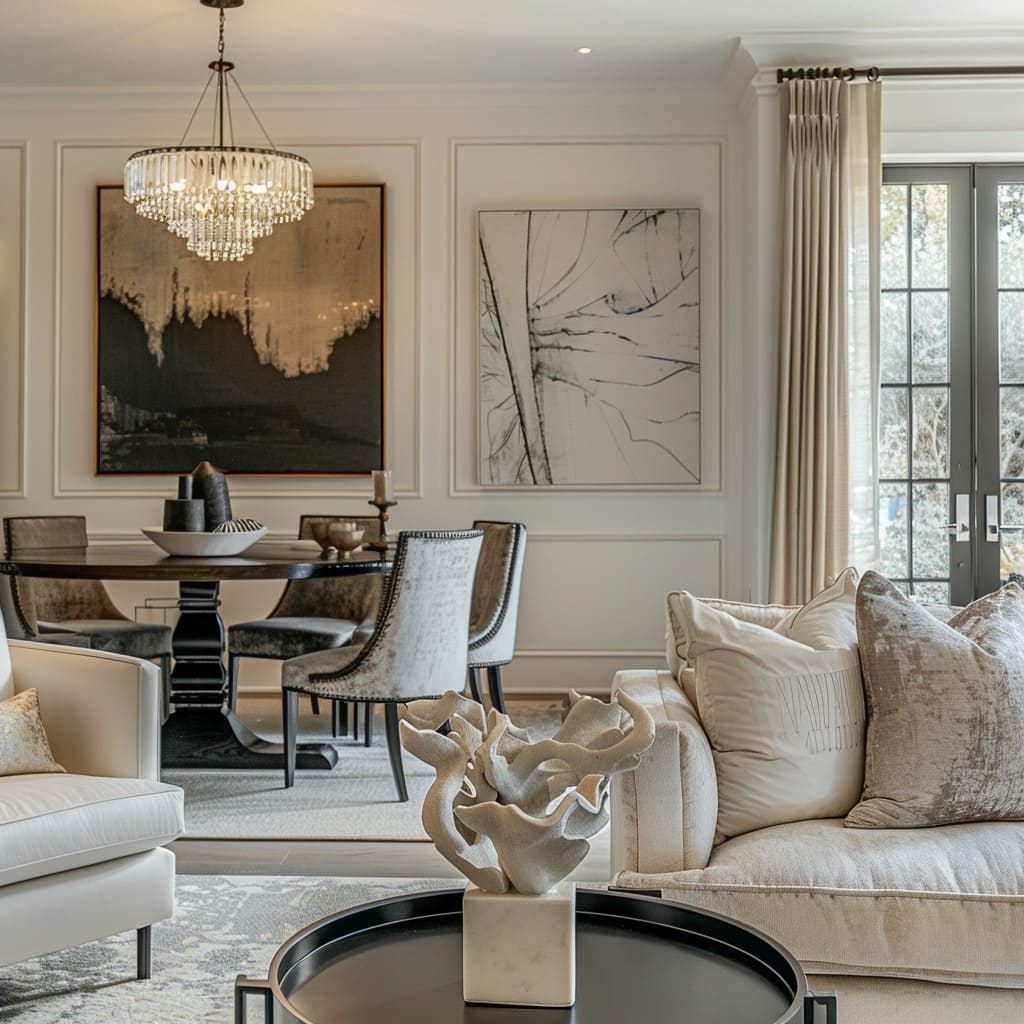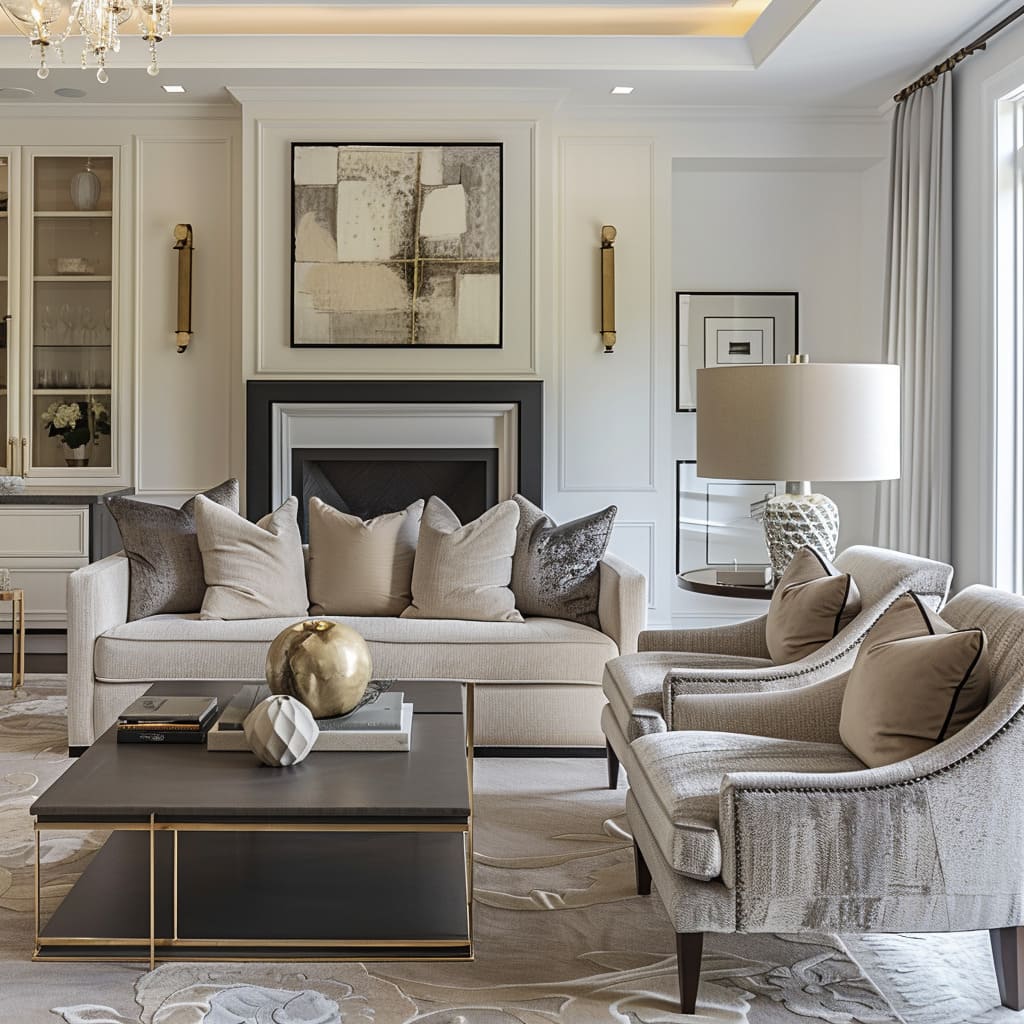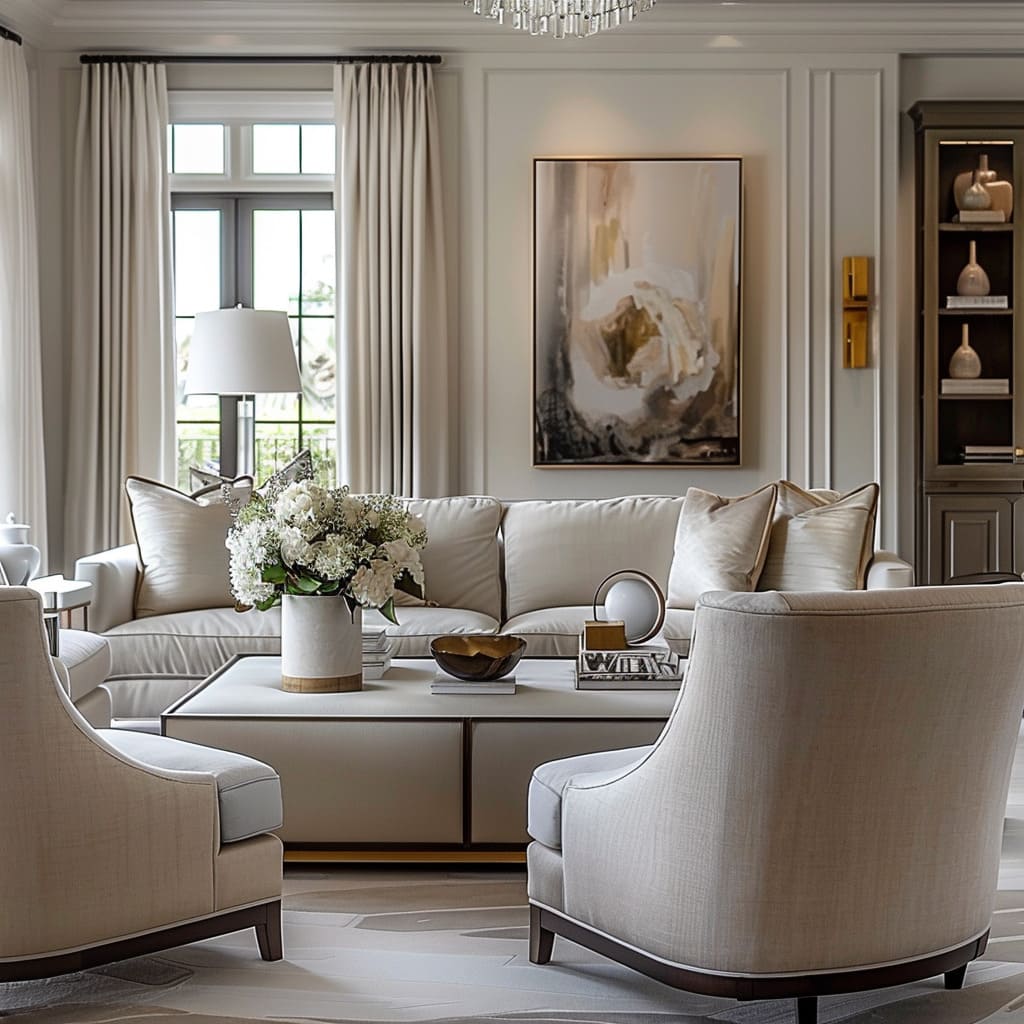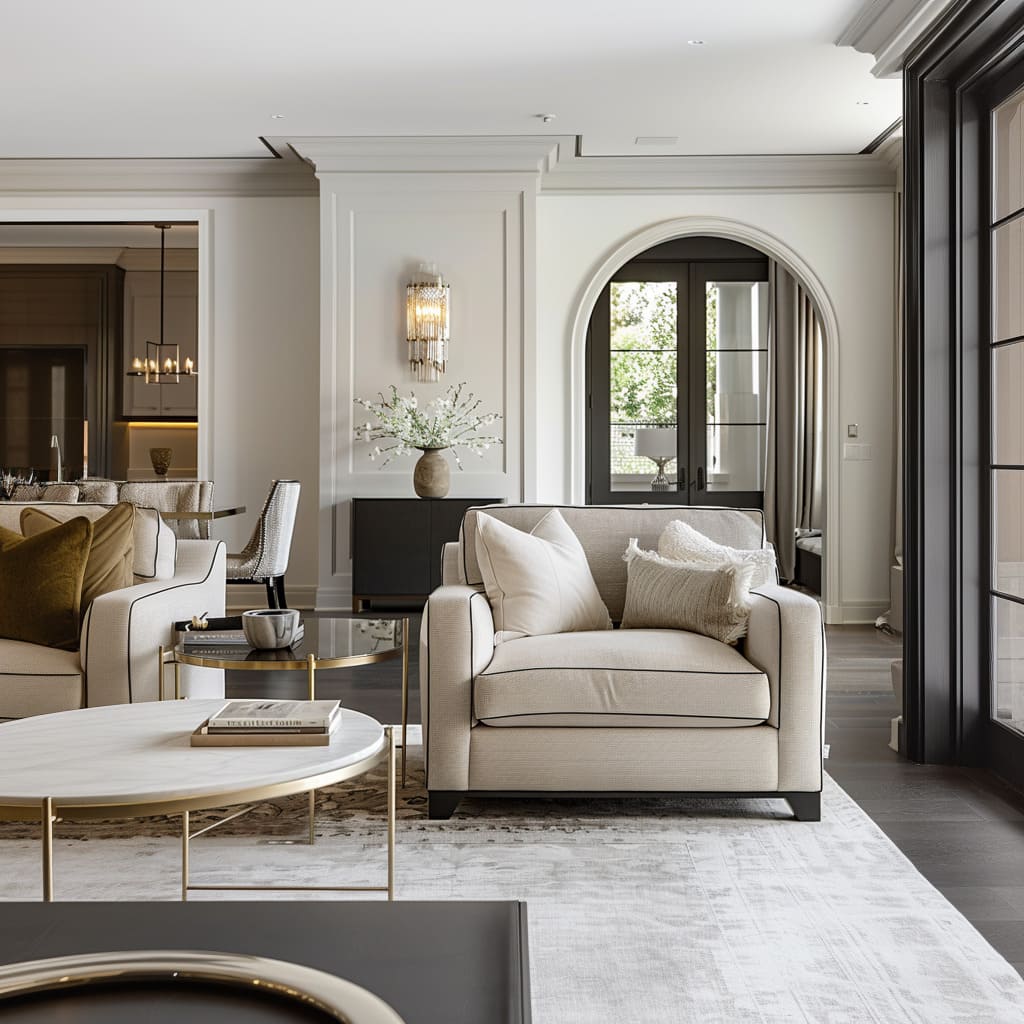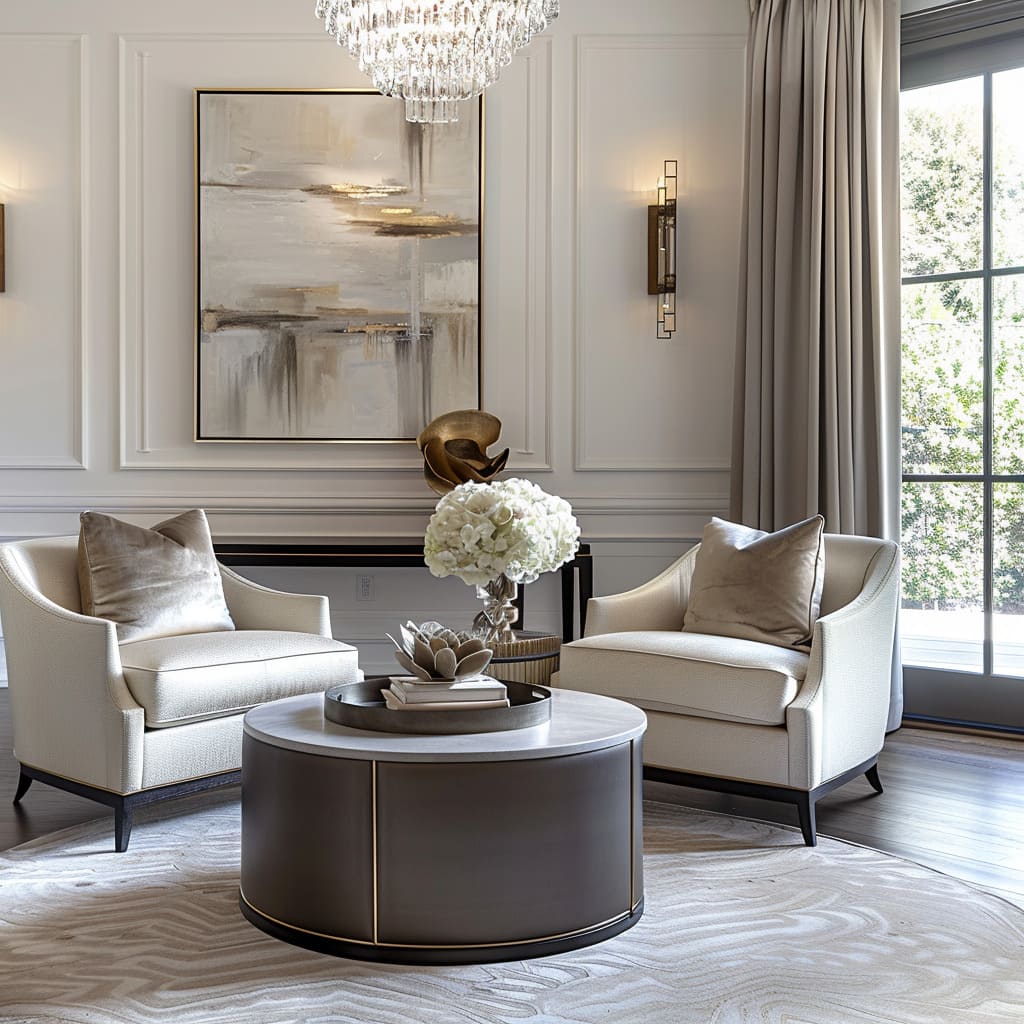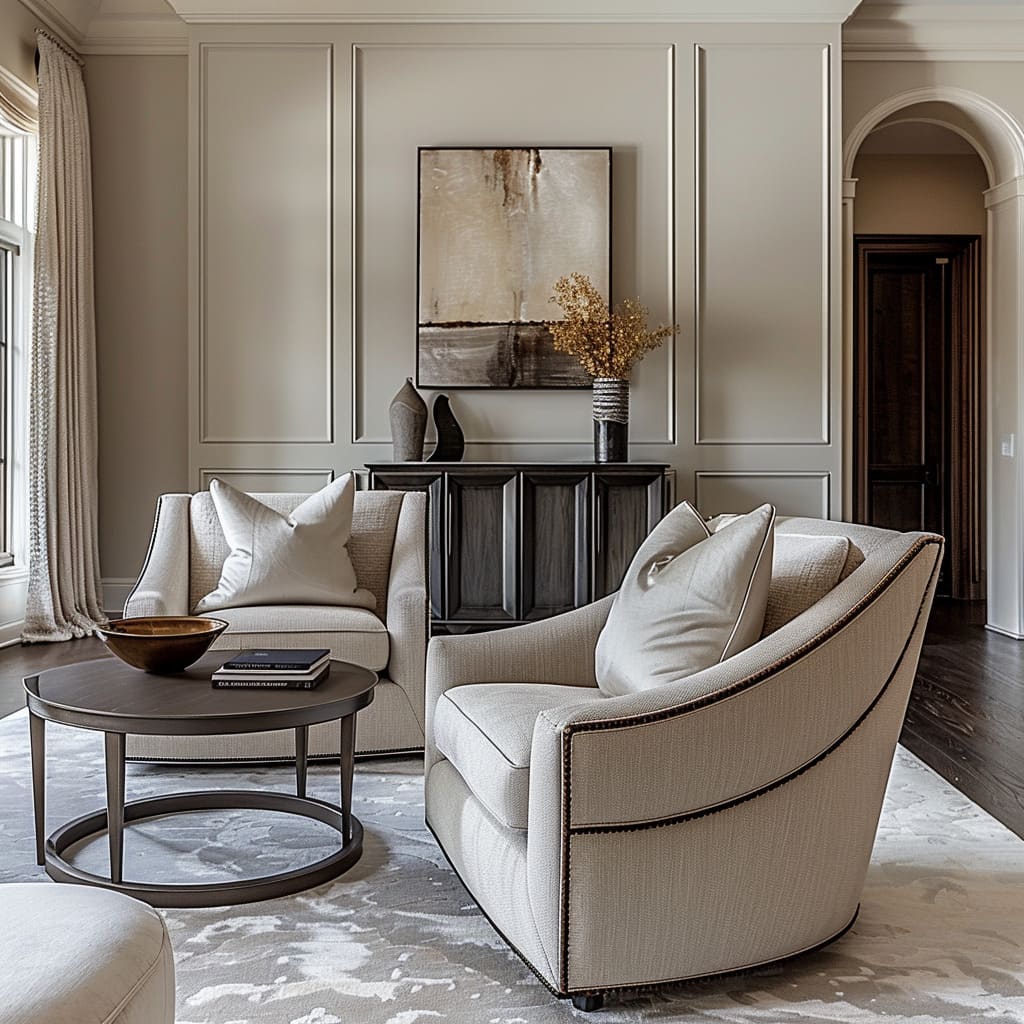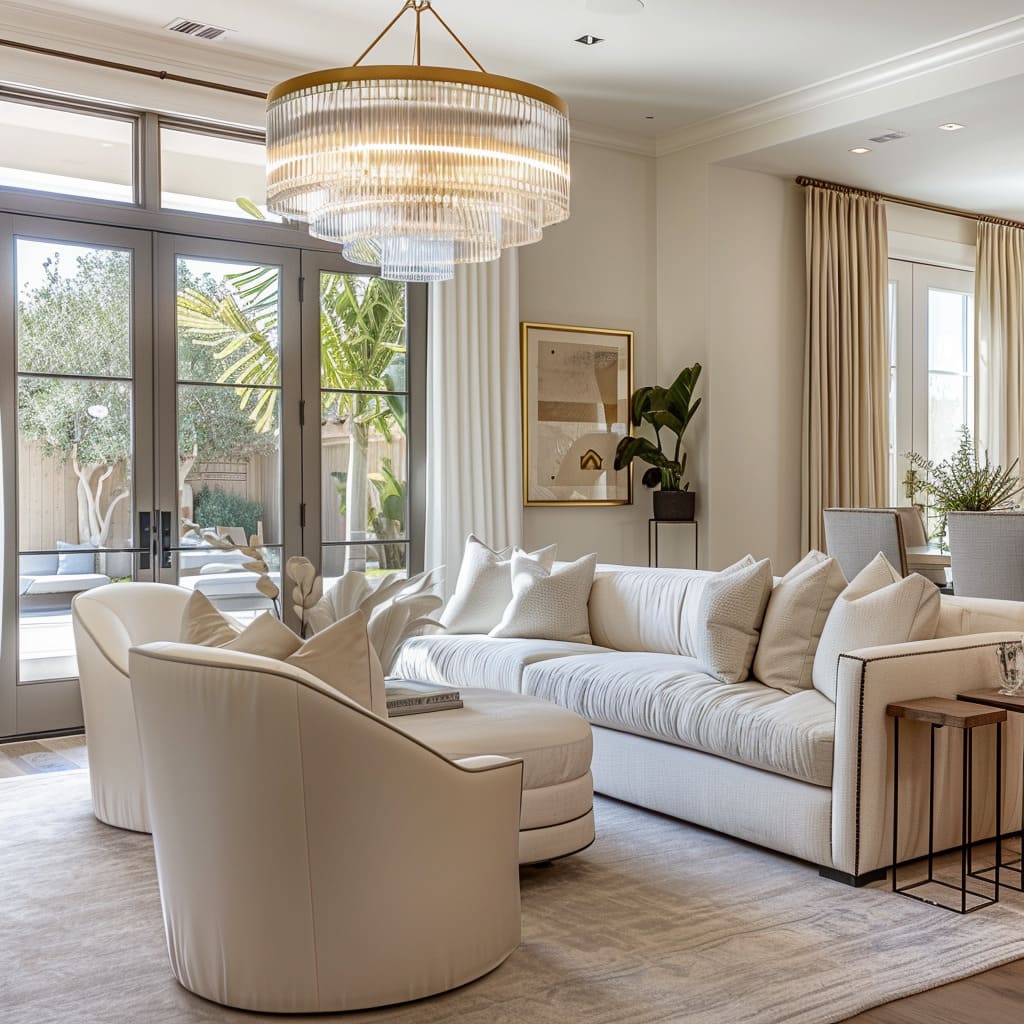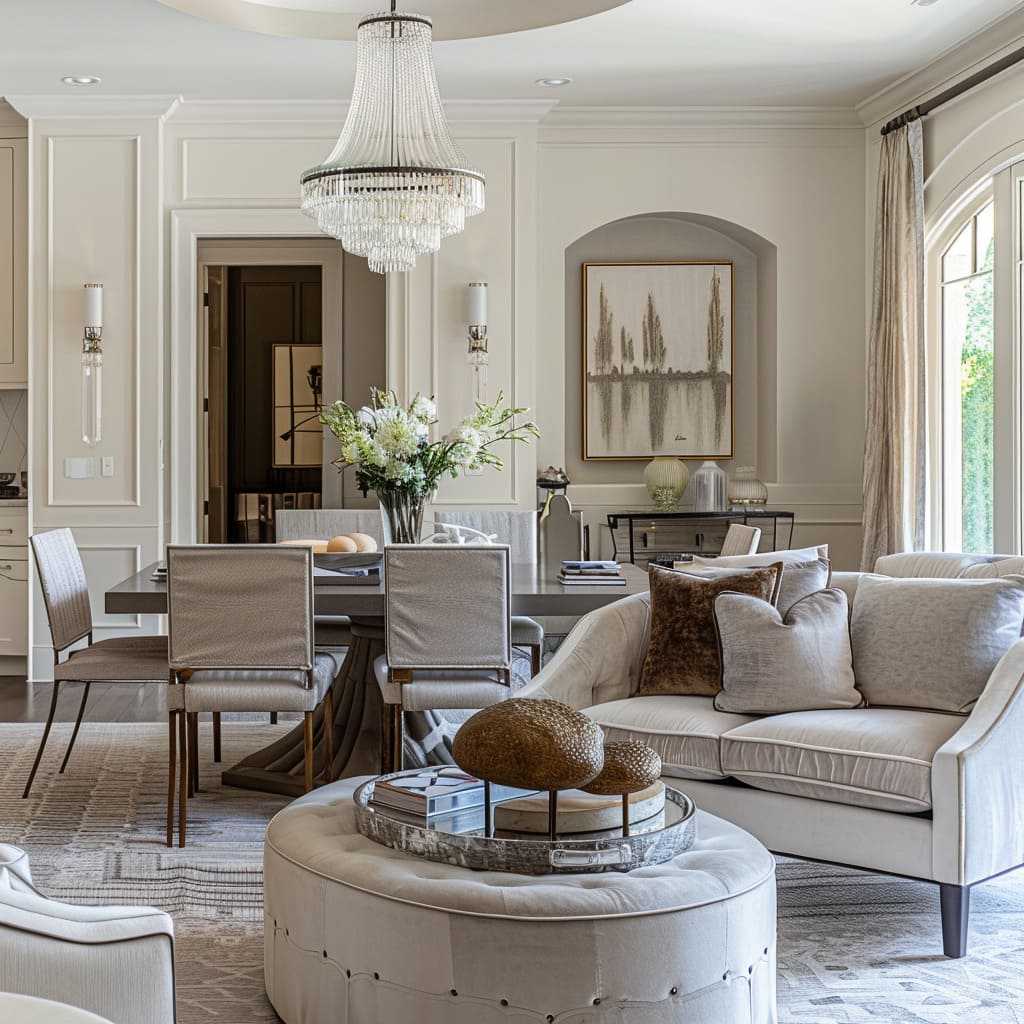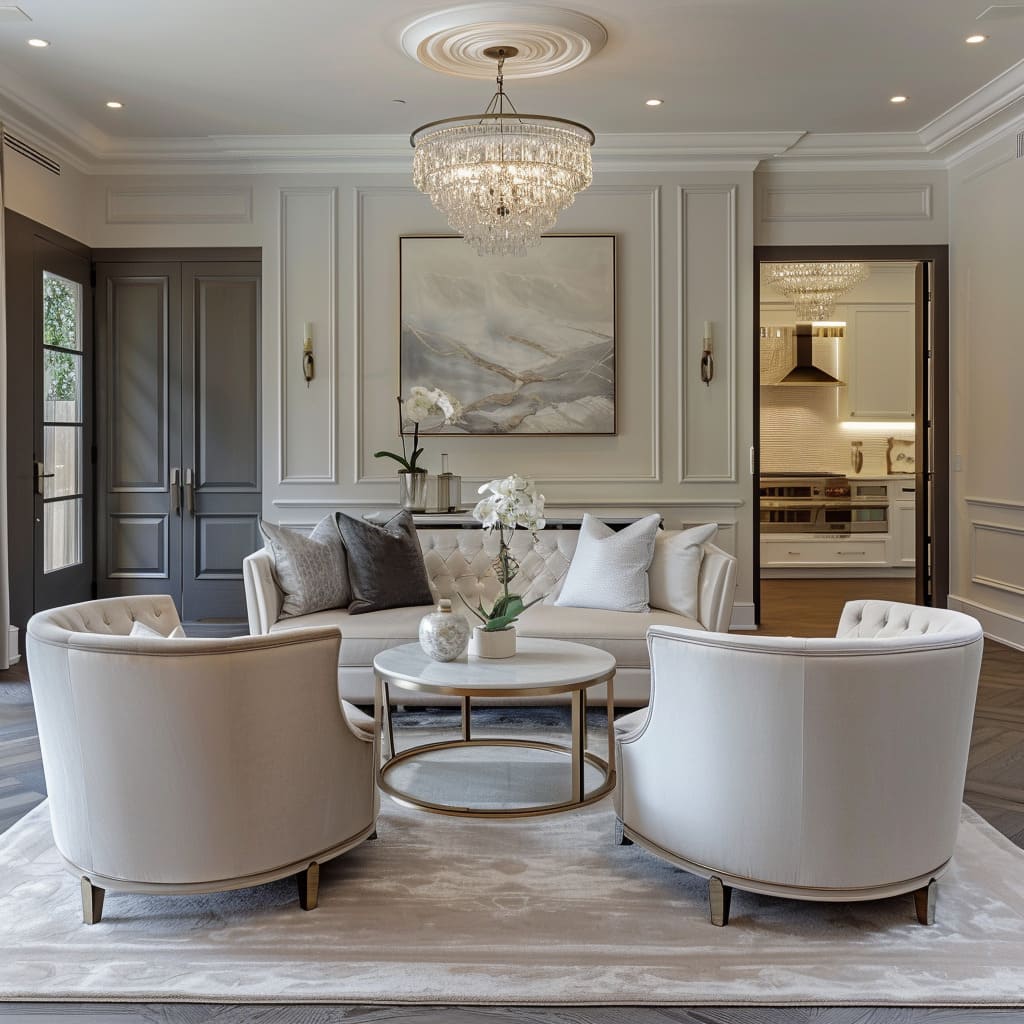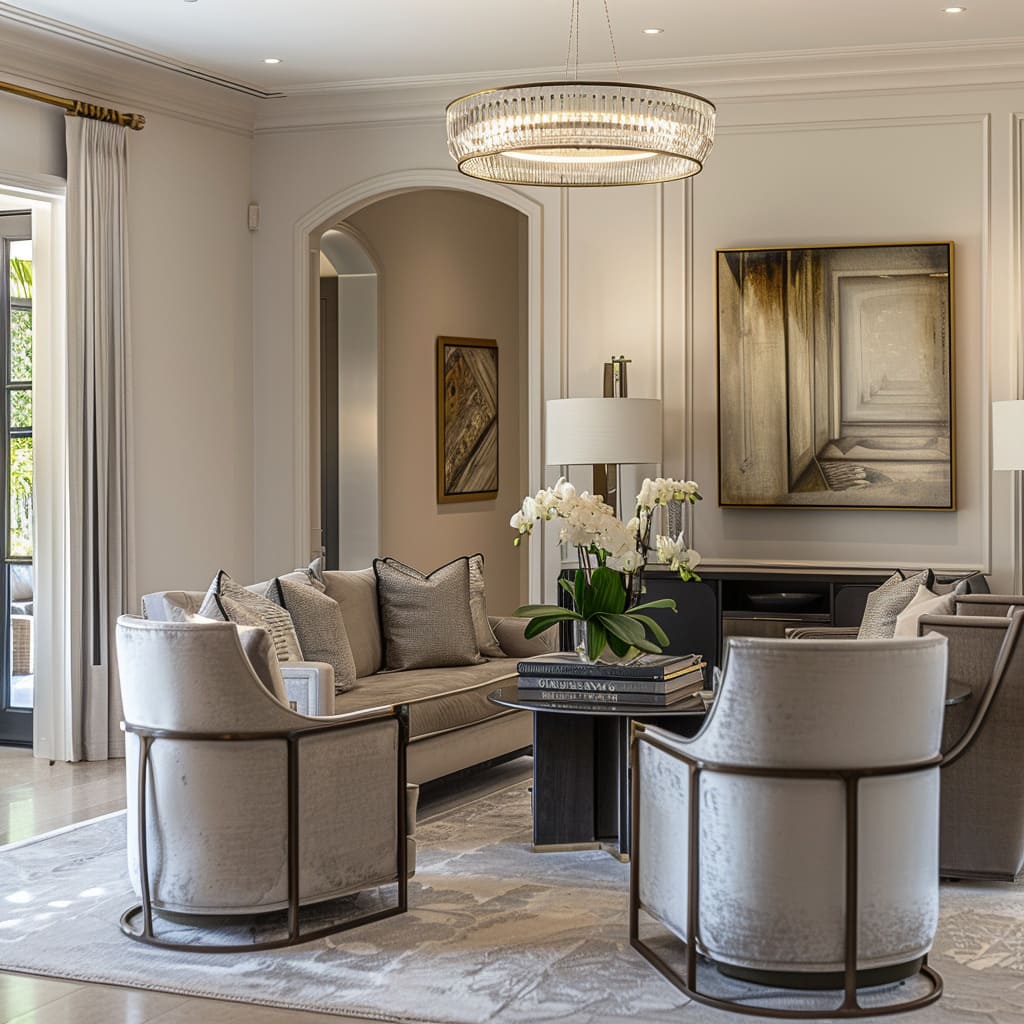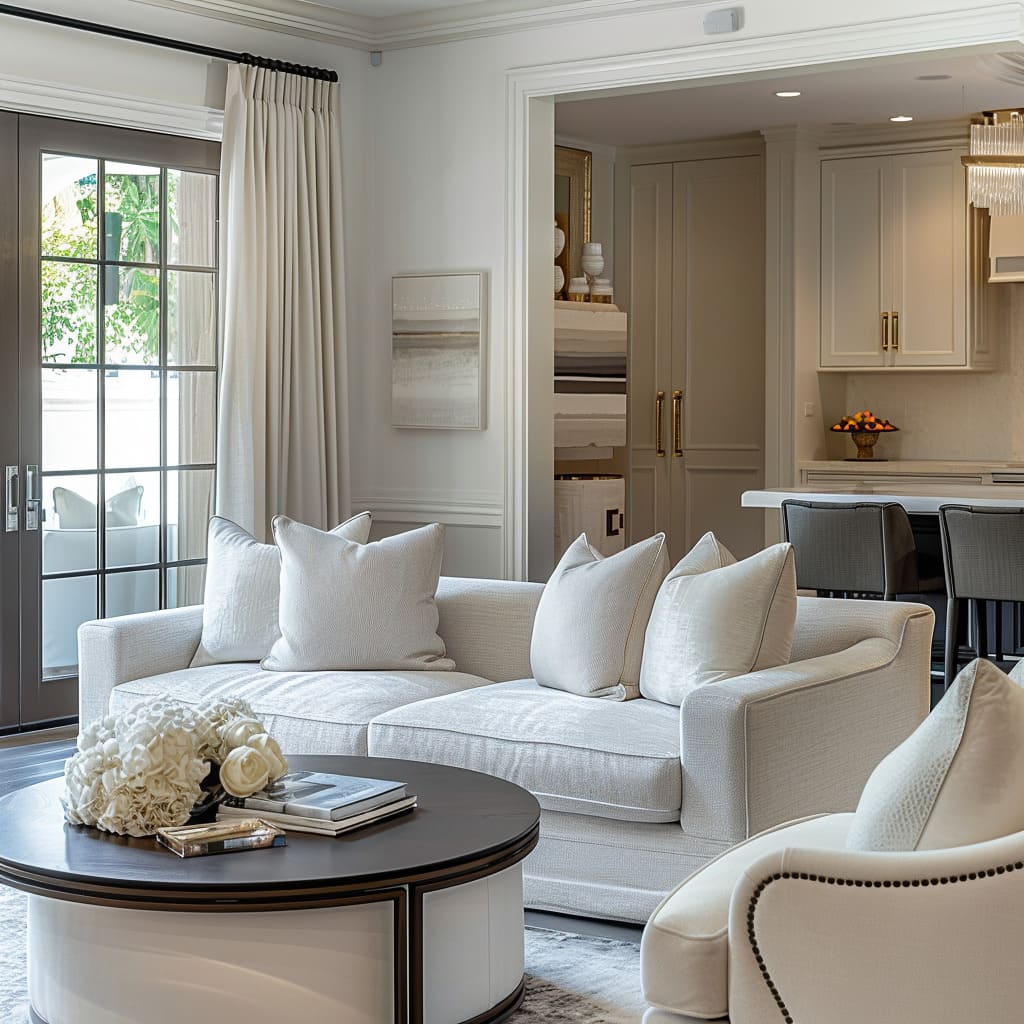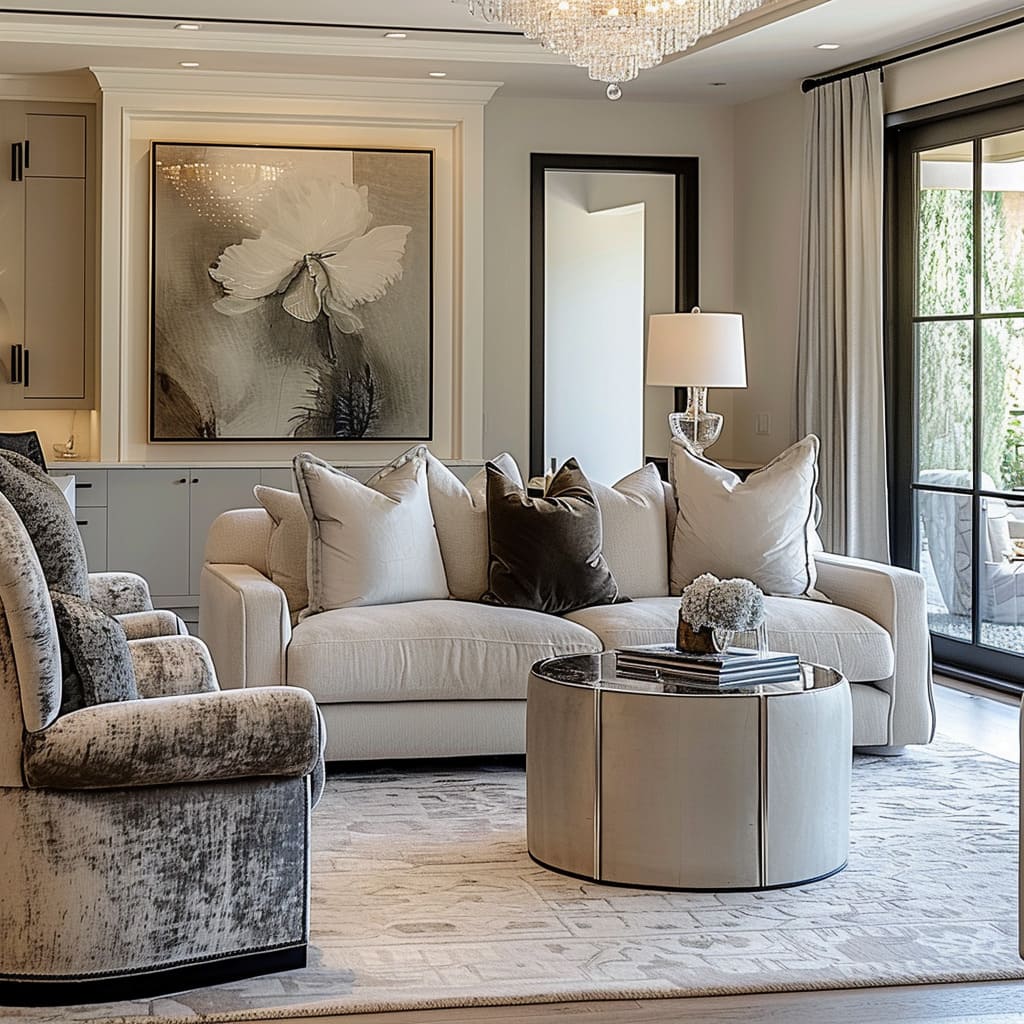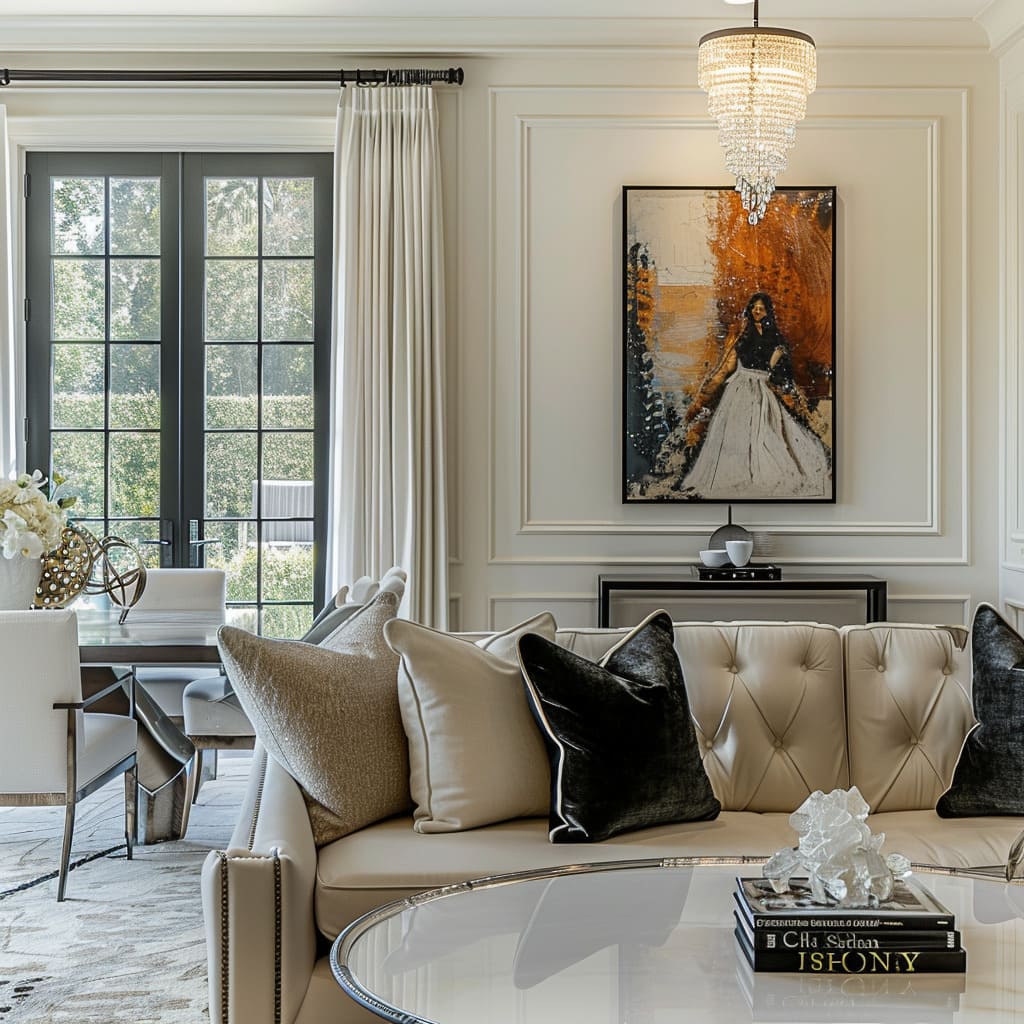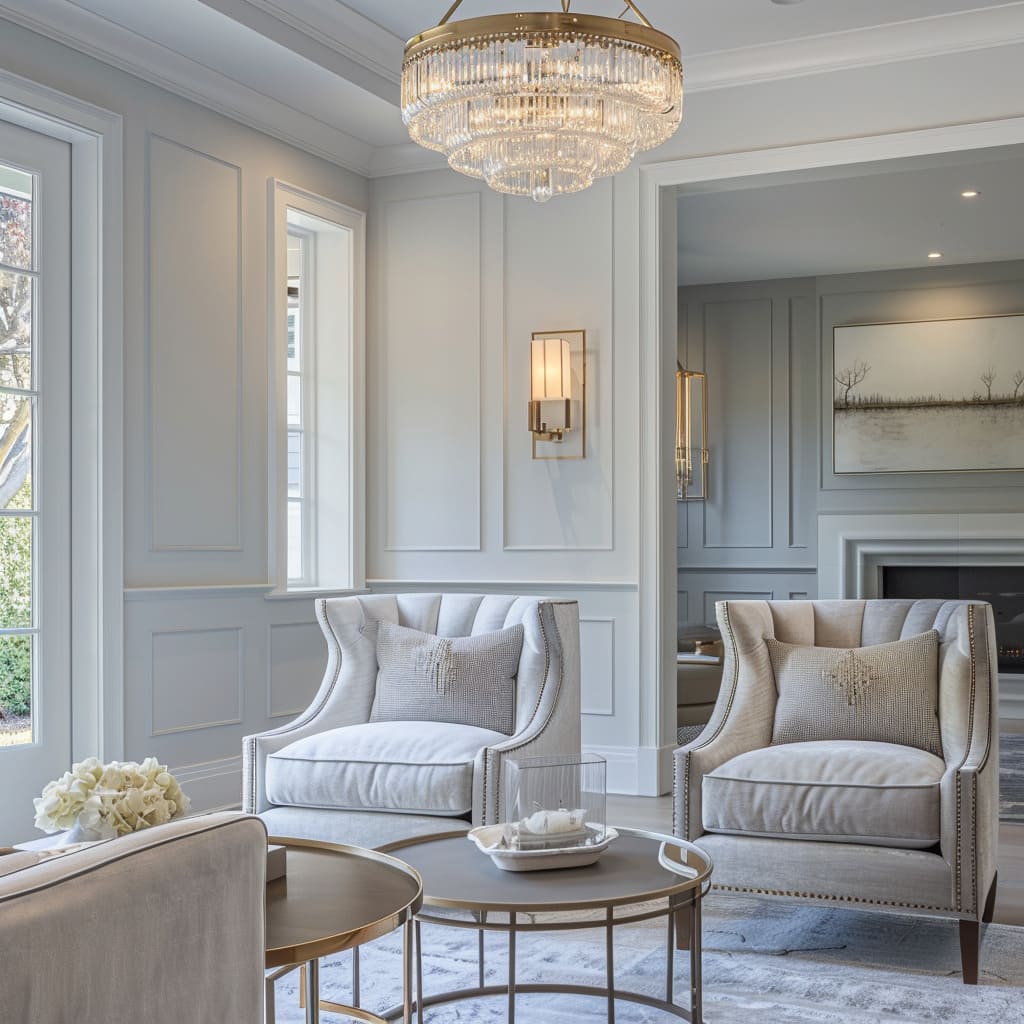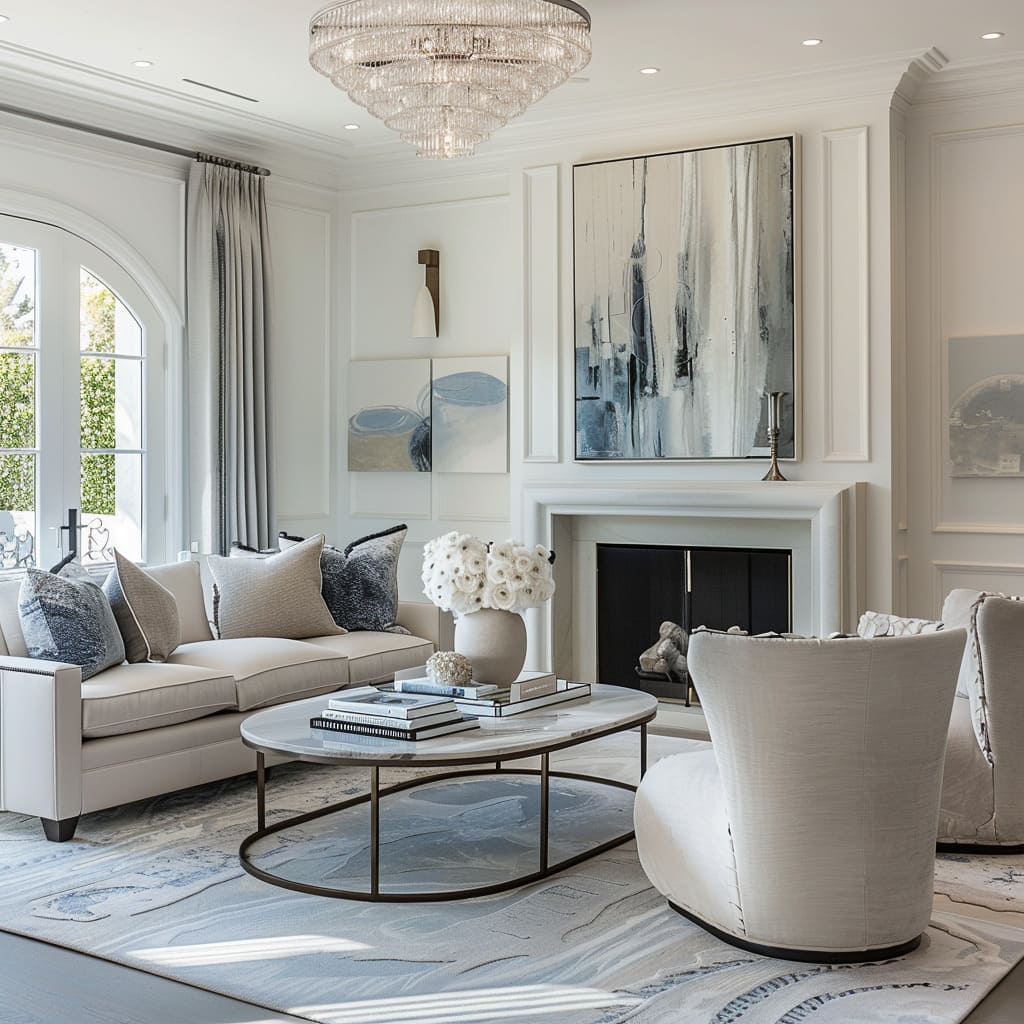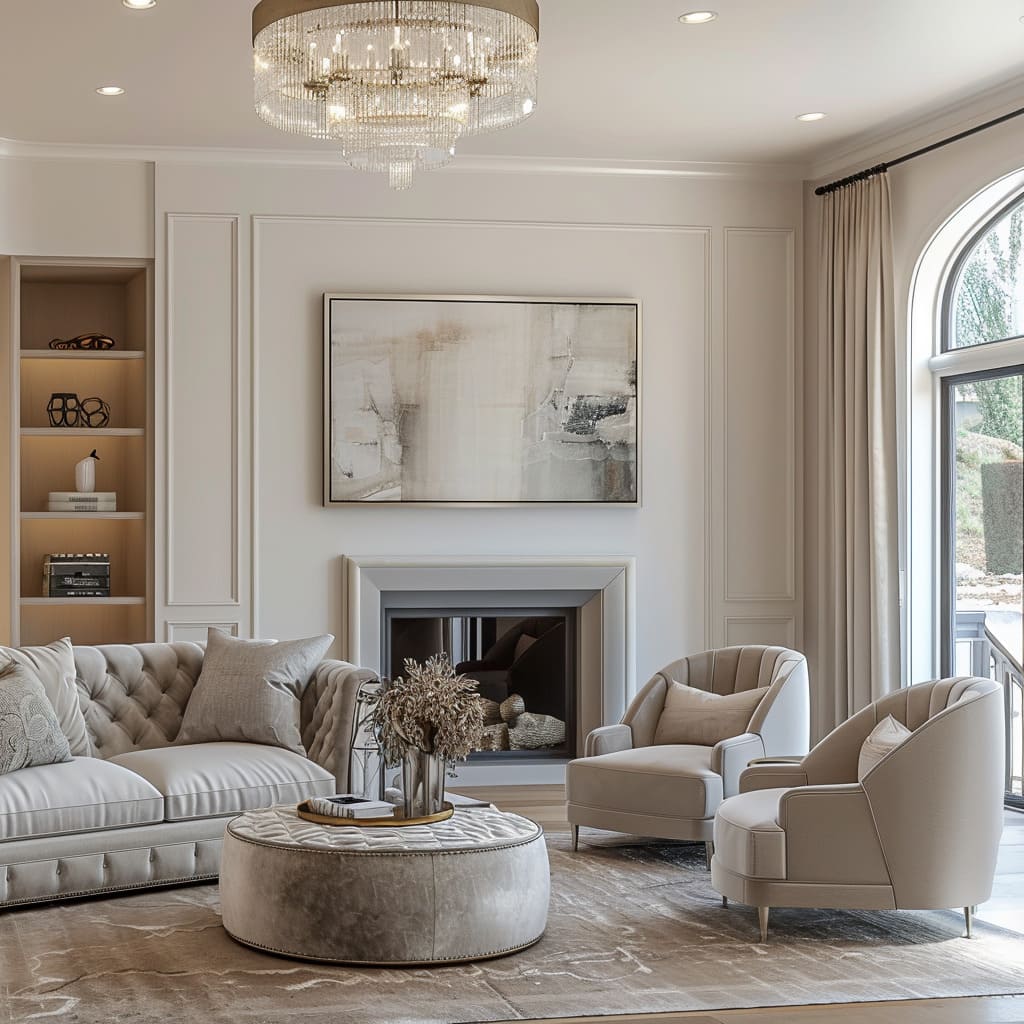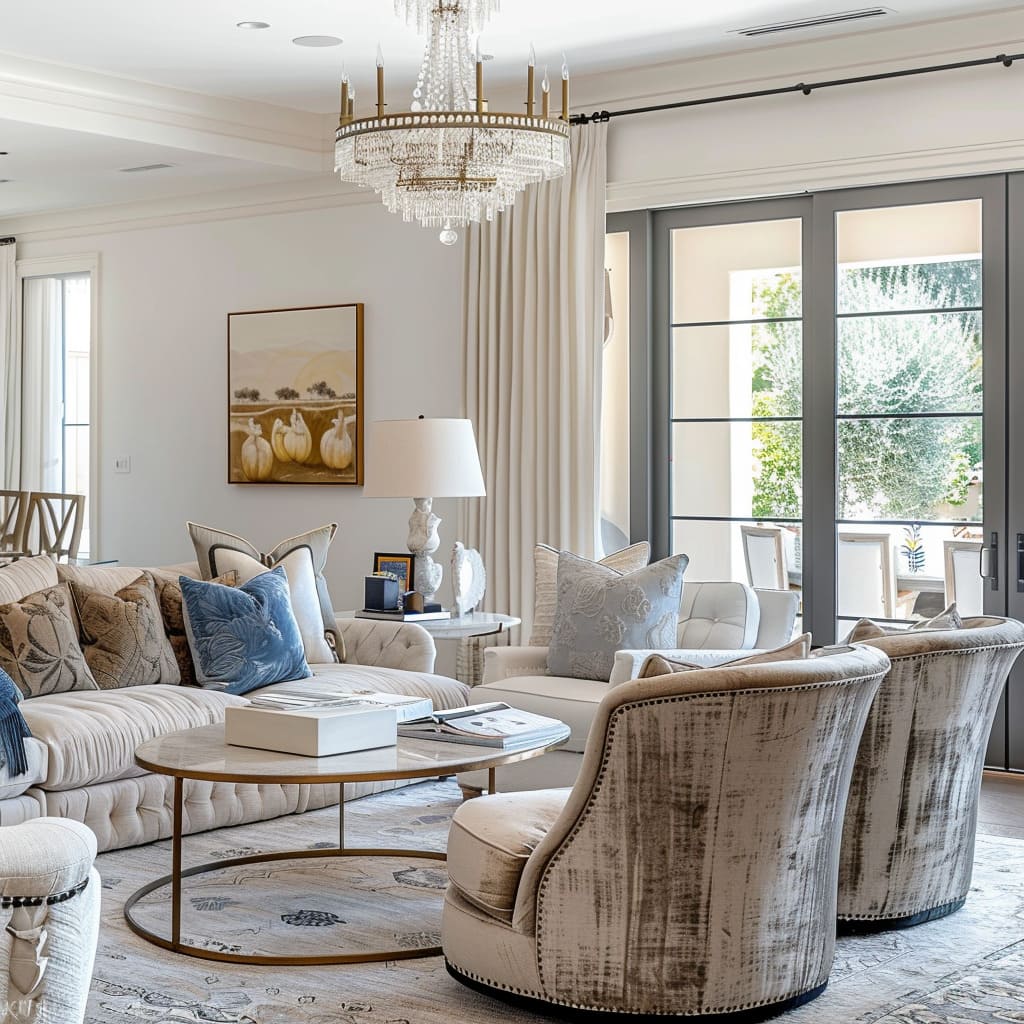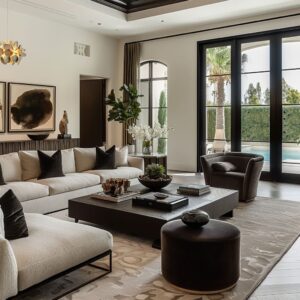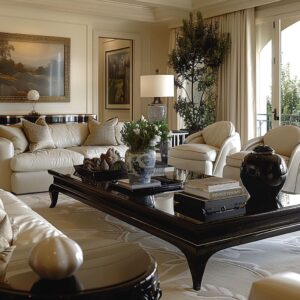Transitional design is a harmonious blend of traditional and contemporary styles, resulting in a space that feels both timeless and fresh. One of the most crucial aspects of achieving a successful transitional living room interior is the strategic selection and placement of focal points.
These statement pieces, whether they are unique furniture items, decor pieces, or lighting fixtures, help to ground the design and create a cohesive look. This article will explore the art of choosing and positioning these focal points to create a balanced and inviting transitional living room.
We will delve into the details of furniture, decor, lighting, finishes, colors, fabrics, materials, and the thoughtful placement of these elements to enhance the overall aesthetic.
Furniture as Focal Points
Sofas and Seating Arrangements
The sofa often serves as the centerpiece of the living room, setting the tone for the entire space. In a transitional living room, a plush, deep-seated sofa upholstered in a light beige or grey fabric provides a neutral backdrop that can be easily accessorized with throw pillows in various textures and patterns.
This sofa should feature a blend of traditional elements like tufted backs and sides, combined with clean, contemporary lines. The placement of the sofa is crucial, as it should anchor the seating area, ideally positioned facing a focal point such as a fireplace or a large window.
Decorative pillows play a vital role in adding depth and texture to the seating arrangement. Opt for a mix of fabrics, including velvet, linen, and silk, in shades that complement the sofa’s upholstery.
Patterns can range from subtle geometrics to more intricate designs, all while maintaining a cohesive color palette. The careful selection of these pillows enhances the visual interest of the sofa and contributes to the overall warmth of the room.
Armchairs and Ottomans
Armchairs are essential components of a well-designed transitional living room. These chairs should offer both comfort and style, featuring clean lines and neutral upholstery that echo the sofa’s design.
Swivel armchairs in a textured fabric can introduce a touch of modernity while maintaining the room’s overall harmony. Placement is key, with armchairs ideally positioned to face the sofa, creating a conversational grouping that invites interaction and relaxation.
An ottoman can serve as a multifunctional piece, providing additional seating, a place to rest feet, or an extra surface for a tray of refreshments. A round, tufted ottoman in a soft, neutral hue can add a touch of elegance and serves as a focal point within the seating area.
Its placement in the center of the arrangement makes it a practical and stylish addition to the room.
Coffee and Side Tables
The coffee table is another crucial element that ties the seating area together. A round coffee table with a mirrored or marble top and a dark wood base combines traditional materials with a modern silhouette, creating a focal point that bridges the different elements of the room.
Styling the coffee table with a curated selection of decor items, such as a stack of books, a decorative tray, and a vase filled with fresh flowers, enhances its visual appeal and functionality.
Side tables should complement the coffee table and provide additional surface space for lighting and decor. Choose tables with sleek, modern designs and finishes that echo the room’s overall aesthetic.
Placement of side tables next to the sofa and armchairs ensures convenience and adds to the room’s layered look.
Already inspired to give your home a fresh look? Use our handy online cost calculator to get an approximate price estimation for revamping your rooms. It’s a great way to plan your budget before starting any renovation project.
Try our online cost calculator.
Decor Items as Focal Points
Art and Sculptures
Artwork plays a significant role in adding personality and visual interest to a transitional living room. Large, framed pieces of abstract art introduce a dynamic element to the space, providing a striking contrast to the room’s neutral color scheme.
These artworks should be strategically placed to draw attention, such as above the fireplace or on a prominent wall. The use of bold brushstrokes and a muted palette in the artwork can create a modern yet harmonious focal point.
Sculptures and other decorative objects also contribute to the room’s character. Choose pieces that reflect the overall design theme, whether it’s a sleek, modern sculpture in a metallic finish or a more traditional ceramic vase.
These items should be displayed on shelves, console tables, or side tables to enhance the room’s layered look and add depth.
Decorative Accessories
Decorative accessories are essential for creating a cohesive and inviting living room. Items such as decorative trays, vases, bowls, and candleholders can add visual interest and provide functional elements that enhance the room’s usability.
When selecting these accessories, consider the materials and finishes to ensure they complement the room’s overall aesthetic.
A curated selection of accessories on coffee tables, side tables, and shelving units can add personality and charm to the space. For instance, a decorative tray with a few carefully chosen items, such as a small sculpture, a stack of books, and a vase of fresh flowers, can create a stylish and functional focal point.
Placement of these accessories should be thoughtful, ensuring they enhance the room’s overall look without creating clutter.
Check out our detailed guide for more ideas and inspiration on designing a contemporary transitional style bathroom. It offers practical tips and beautiful design concepts to help you create the perfect space.
Lighting as a Focal Point
Chandeliers
Lighting is a critical component of transitional design, and a statement chandelier can serve as the crowning jewel of the living room. A crystal chandelier with cascading layers introduces a sense of glamour and sophistication, illuminating the space with a warm, inviting glow.
The chandelier’s intricate design and sparkling presence can tie together the various design elements, adding a touch of luxury to the room.
The placement of the chandelier is essential for creating a balanced and harmonious space. It should be centered above the seating area or the coffee table, ensuring it draws attention and enhances the room’s overall ambiance.
The height at which the chandelier is hung is also important, as it should be high enough to avoid obstructing the view but low enough to create an intimate and welcoming atmosphere.
Wall Sconces and Table Lamps
In addition to the chandelier, wall sconces and table lamps play a vital role in providing layered lighting that adds warmth and depth to the living room. Crystal wall sconces on either side of the fireplace or artwork can create a balanced and cohesive look, echoing the chandelier’s glamour while providing additional light sources.
Table lamps should be chosen for their design and functionality, with sleek, modern bases and soft, neutral shades that complement the room’s overall aesthetic. Placement of table lamps on side tables or console tables ensures convenience and enhances the room’s layered look.
The combination of different lighting sources creates a well-lit and inviting environment, highlighting the room’s focal points and adding to its overall elegance.
Finishes, Colors, and Fabrics
Neutral Color Palettes
A neutral color palette is fundamental to transitional design, creating a calm backdrop that allows the furniture and decor to stand out. Shades of beige, grey, and white dominate the space, providing a cohesive and sophisticated environment.
These neutral tones are essential for achieving the balanced and harmonious look characteristic of transitional design.
The use of a neutral color palette also allows for flexibility in accessorizing and updating the room over time. By maintaining a consistent base of neutral tones, it becomes easier to introduce new colors and textures through accessories and decor items, keeping the room fresh and stylish.
Textures and Patterns
Textures and patterns play a significant role in adding depth and visual interest to a transitional living room. The use of textured fabrics in upholstery and throw pillows can create a rich and inviting atmosphere.
Velvet, linen, and silk are popular choices, each adding its unique texture to the room.
Patterned rugs are another important element, adding warmth and grounding the seating arrangement. Subtle geometric or floral patterns in neutral shades can complement the room’s color palette, adding visual interest without overwhelming the design.
The combination of different textures and patterns enhances the room’s depth and richness, creating a layered and cohesive look.
Material Combinations
Transitional design often involves combining traditional materials like wood and marble with modern finishes. For example, a coffee table with a polished marble top and a dark wood base can bridge the traditional and contemporary elements of the room.
Similarly, a sofa with a classic tufted design upholstered in a modern fabric creates a balanced and harmonious look.
The use of high-quality materials is essential for achieving a luxurious feel. Investing in well-crafted furniture and decor items ensures longevity and enhances the room’s overall aesthetic.
The thoughtful combination of different materials and finishes adds to the room’s depth and richness, creating a sophisticated and inviting environment.
Placement and Arrangement
Symmetrical Layouts
Symmetry is a key principle in transitional design, creating a balanced and harmonious space. A symmetrical layout ensures that each element of the room is mirrored on either side, contributing to a cohesive and structured look.
For example, placing two identical armchairs on either side of a coffee table creates a balanced seating arrangement that invites interaction and relaxation.
Symmetrical layouts can also be achieved through the placement of decor items and lighting. Matching wall sconces on either side of a fireplace or artwork enhance the room’s symmetry, creating a cohesive and polished look.
The use of symmetry in furniture and decor placement adds to the room’s overall harmony and balance.
Functional Zoning
Creating functional zones within the living room is essential for a well-designed space. Functional zoning involves defining different areas for specific purposes, such as seating, display, and lighting.
For example, the seating area can be anchored by a sofa and armchairs, while a console table against the wall can serve as a display area for decorative items and lighting.
The use of architectural features can also help define functional zones. For instance, built-in shelving units on either side of a fireplace can create a display zone that adds visual interest and storage.
Functional zoning ensures that each area of the room serves a purpose, enhancing the room’s usability and overall aesthetic.
Open and Airy Feel
An open and airy feel is essential for a transitional living room, creating a welcoming and inviting environment. Large windows and French doors allow natural light to flood the space, enhancing its brightness and highlighting the carefully chosen decor.
The use of light, neutral drapes can add a touch of elegance while maintaining the room’s open feel.
The placement of furniture and decor should also contribute to the room’s open and airy atmosphere. Avoid overcrowding the space with too many items, and ensure that there is enough room for movement and flow.
Thoughtful placement of furniture and decor enhances the room’s overall look and creates a balanced and harmonious environment.
Conclusion
Choosing statement pieces as focal points in transitional design is an art that involves careful selection and placement of furniture, decor, lighting, finishes, colors, fabrics, and materials. Each element contributes to the overall harmony and elegance of the living room, creating a space that is both timeless and contemporary.
By focusing on the details and ensuring a cohesive look, it is possible to achieve a balanced and inviting transitional living room that offers comfort and sophistication in equal measure.

